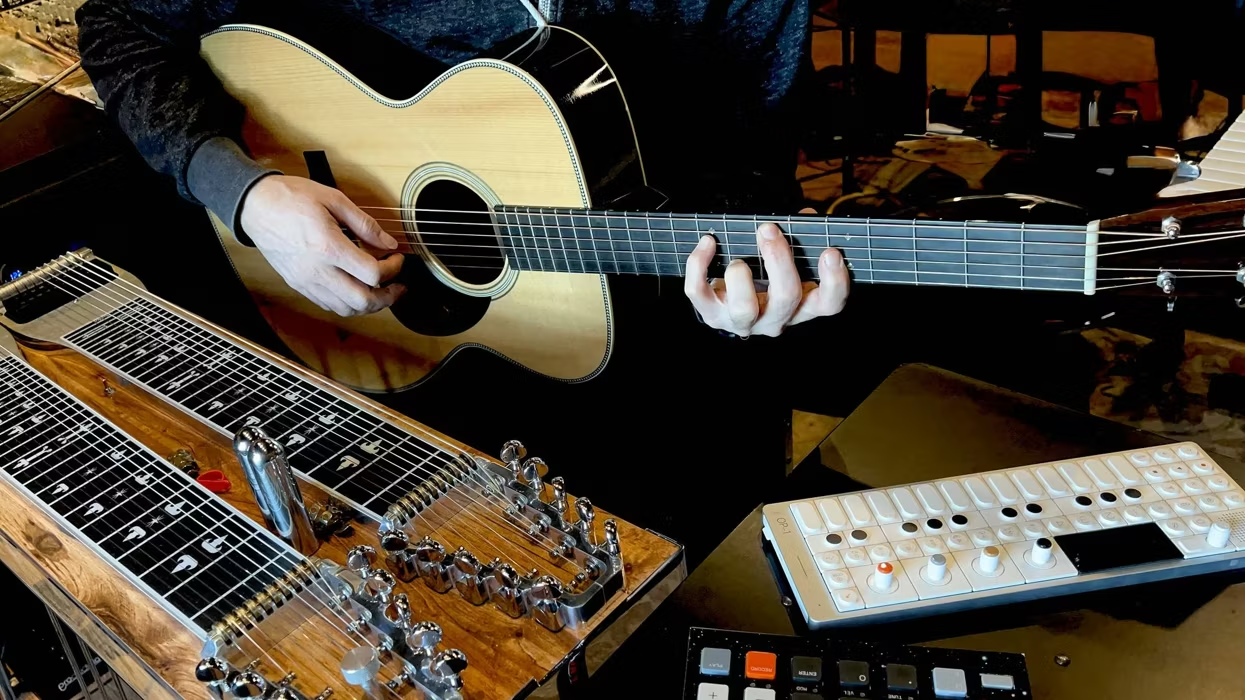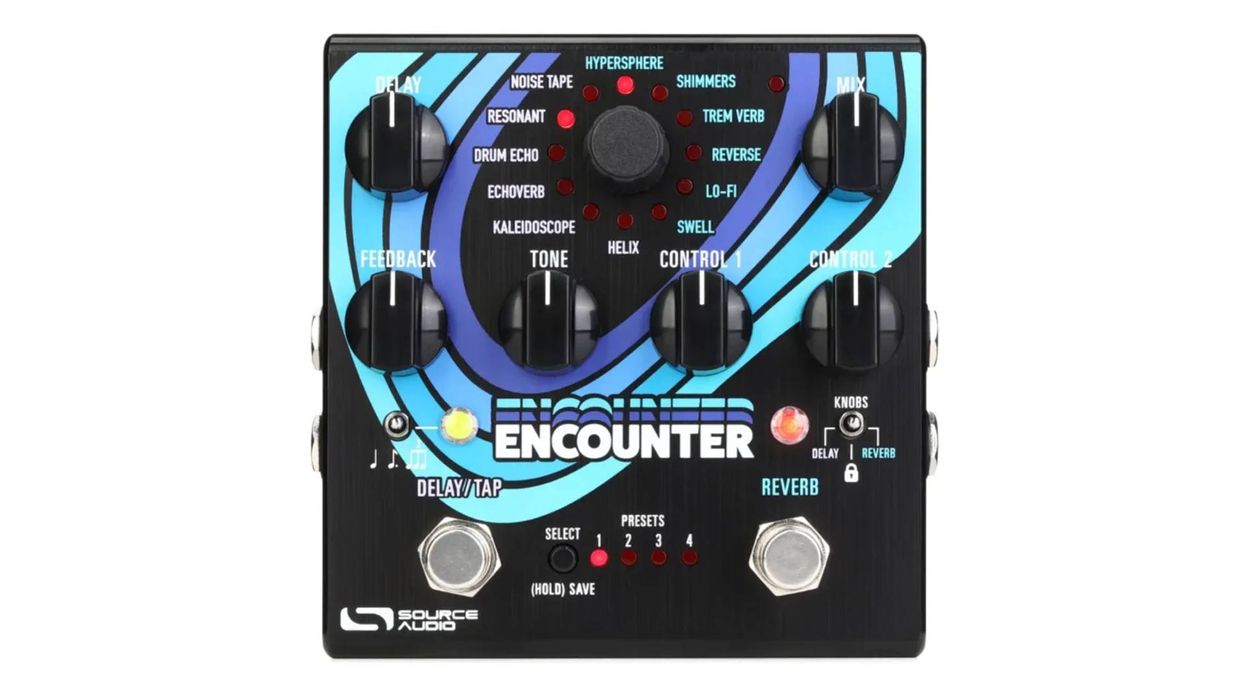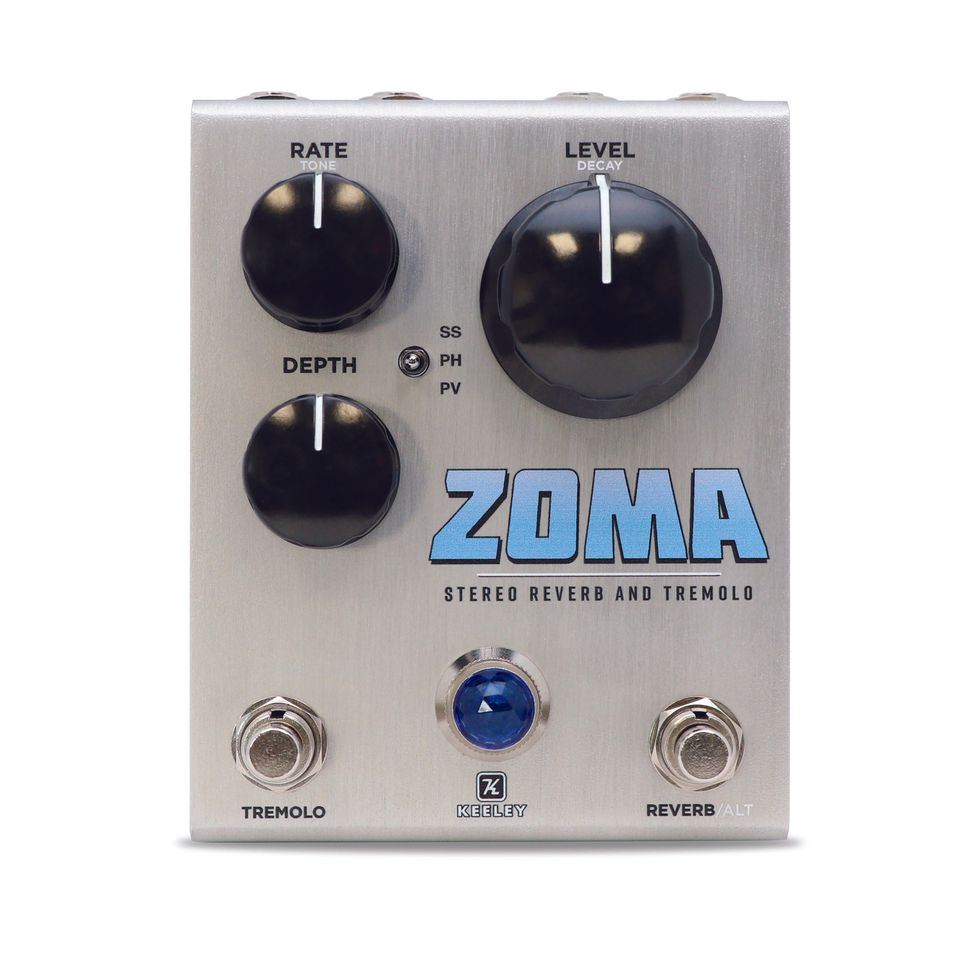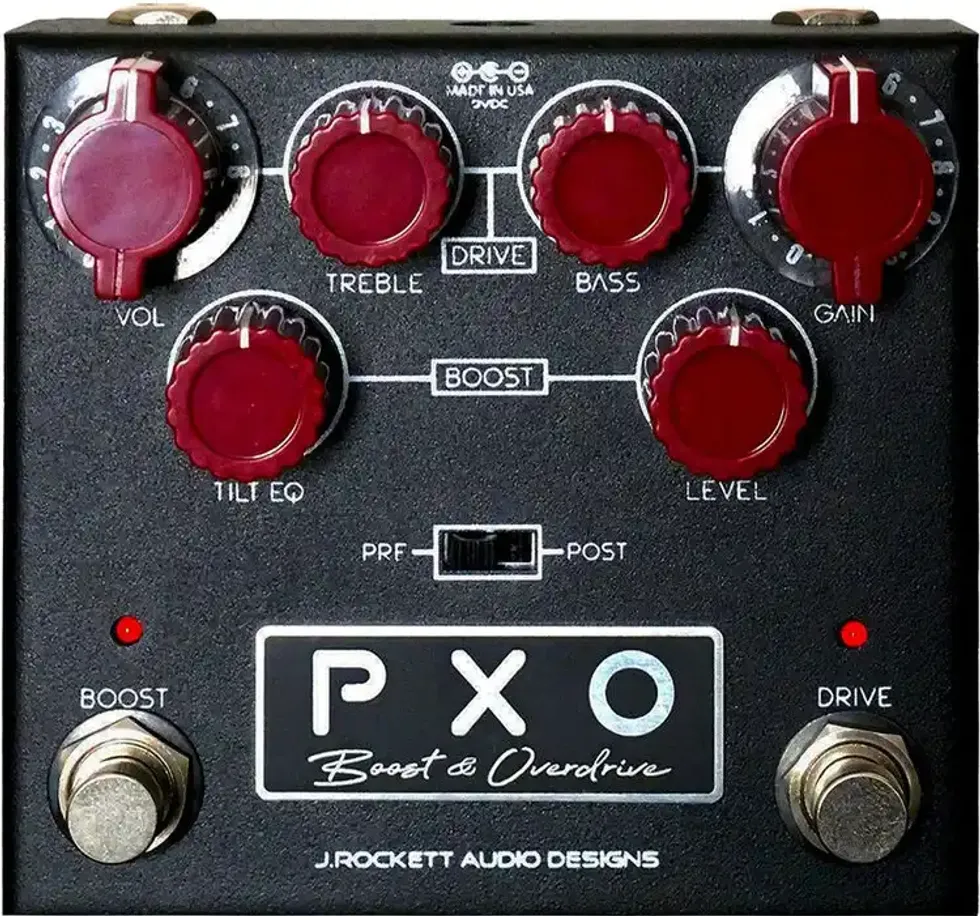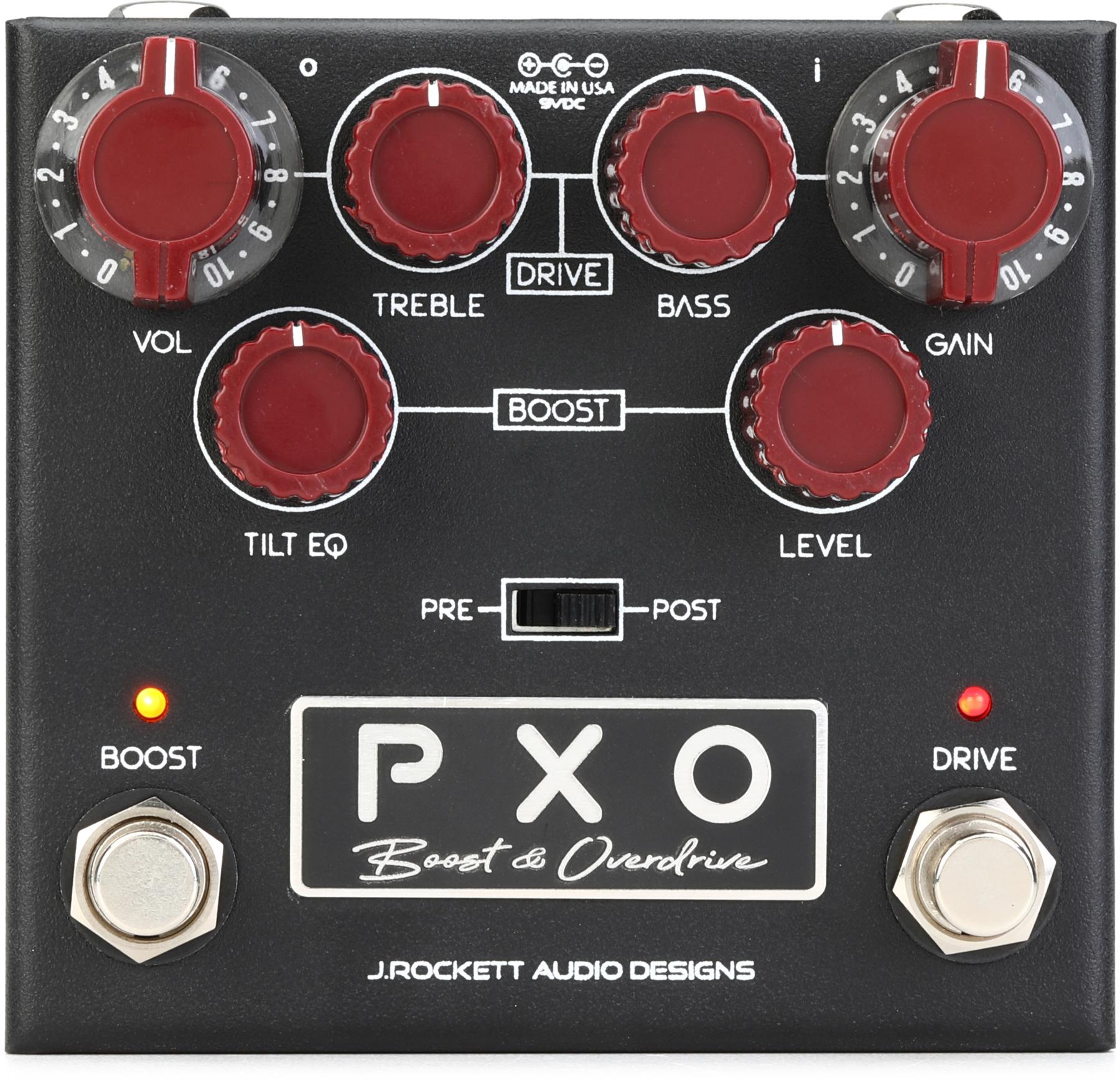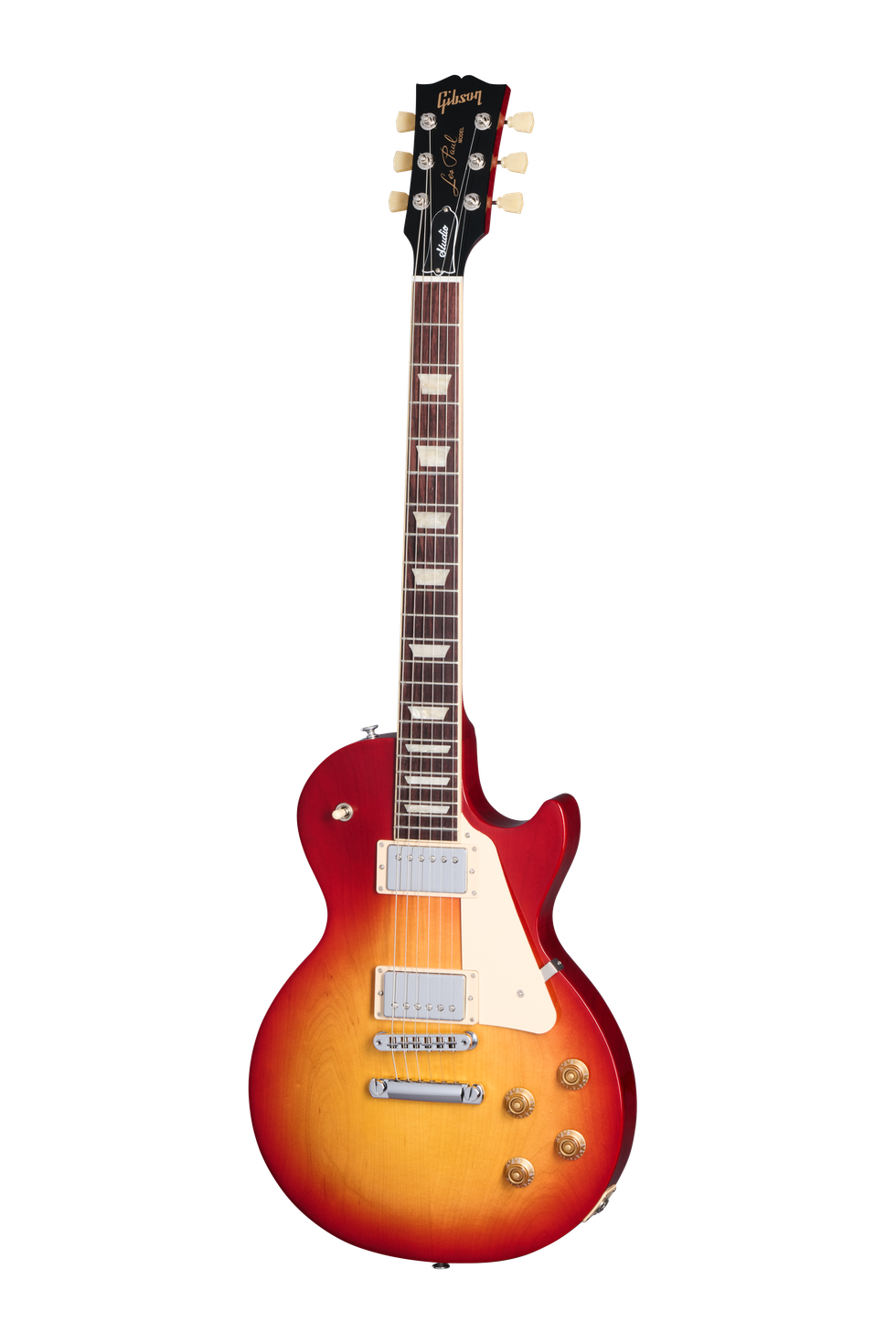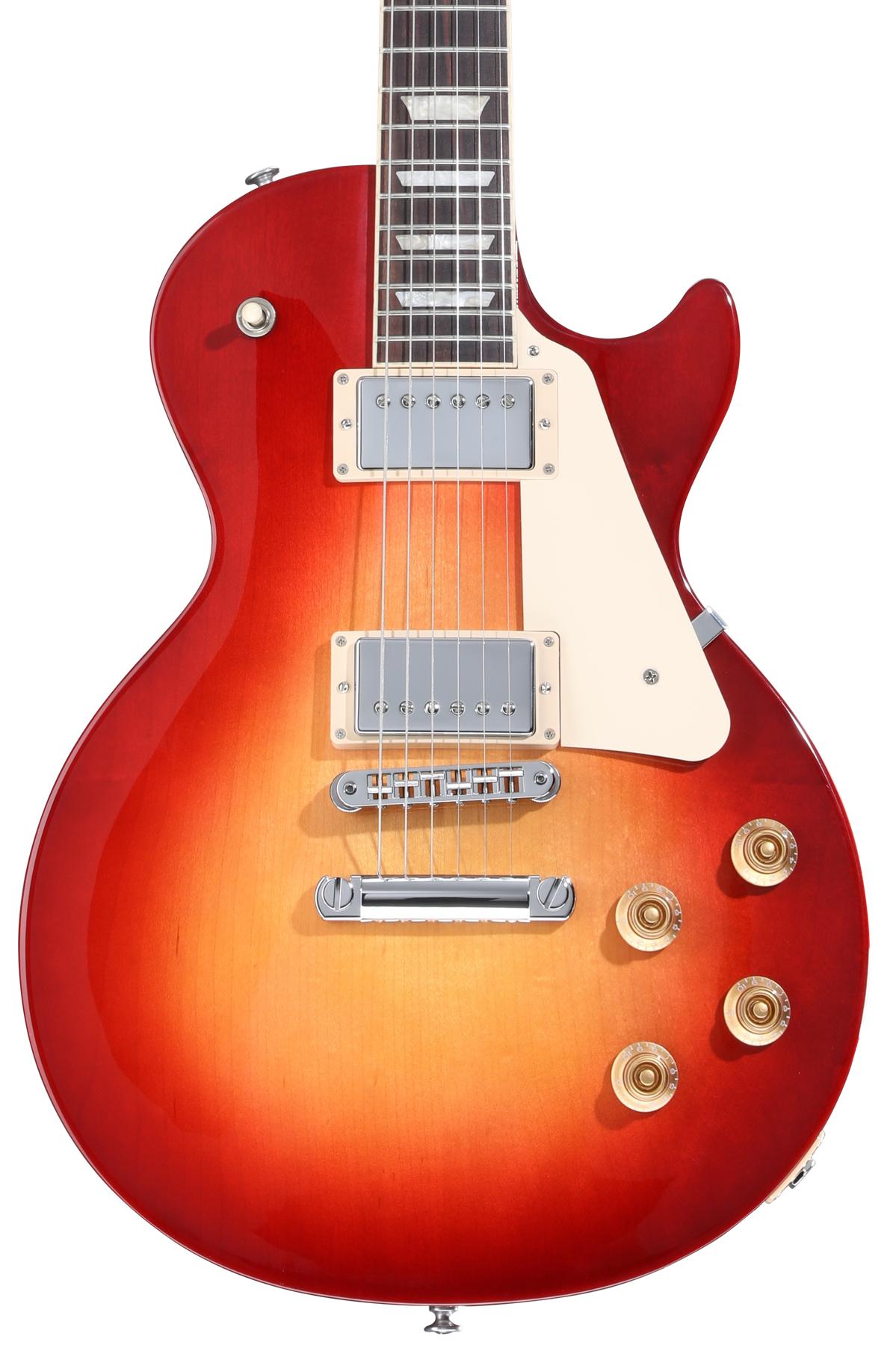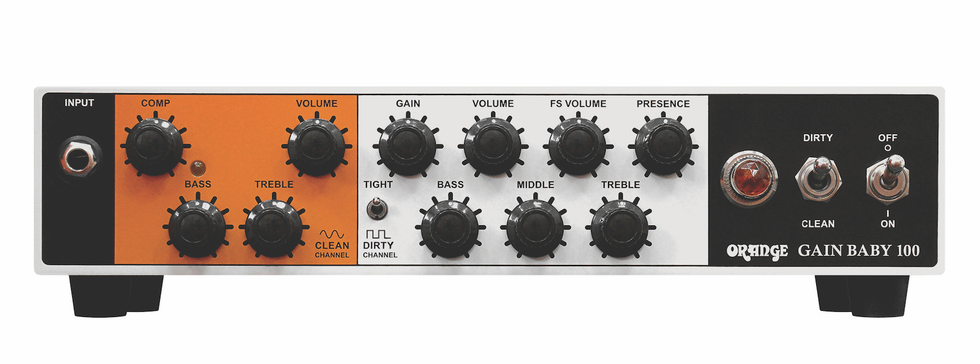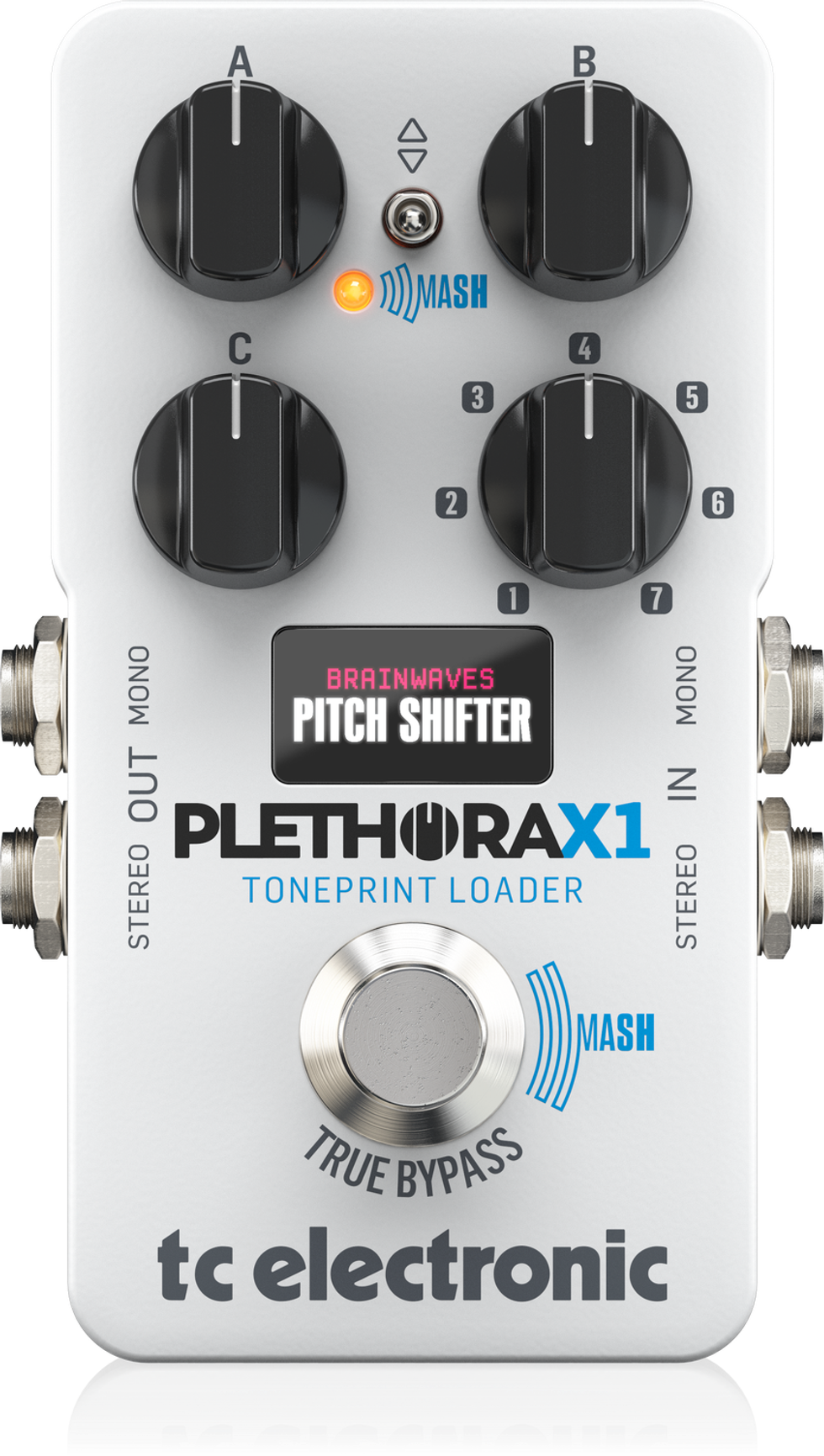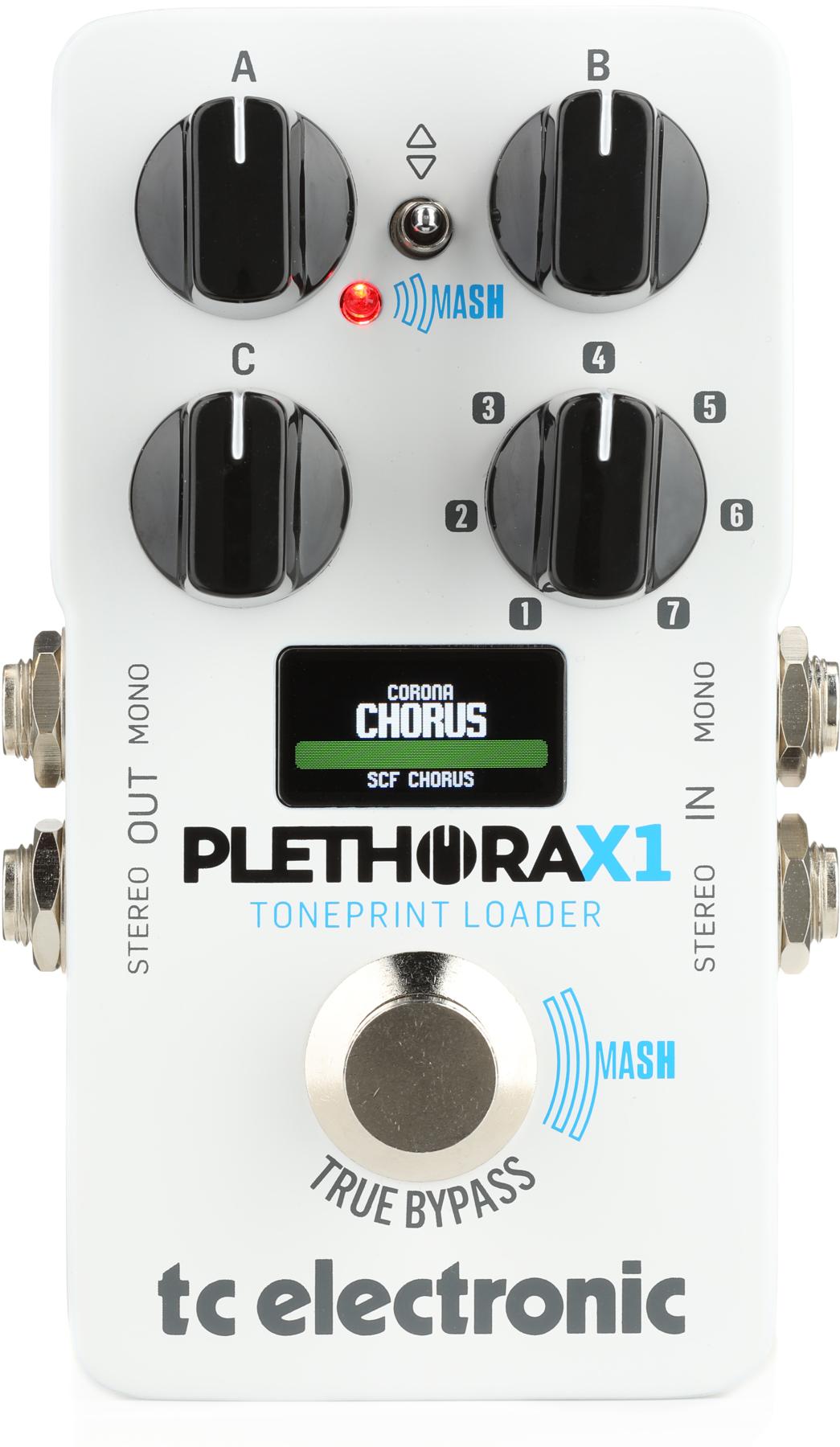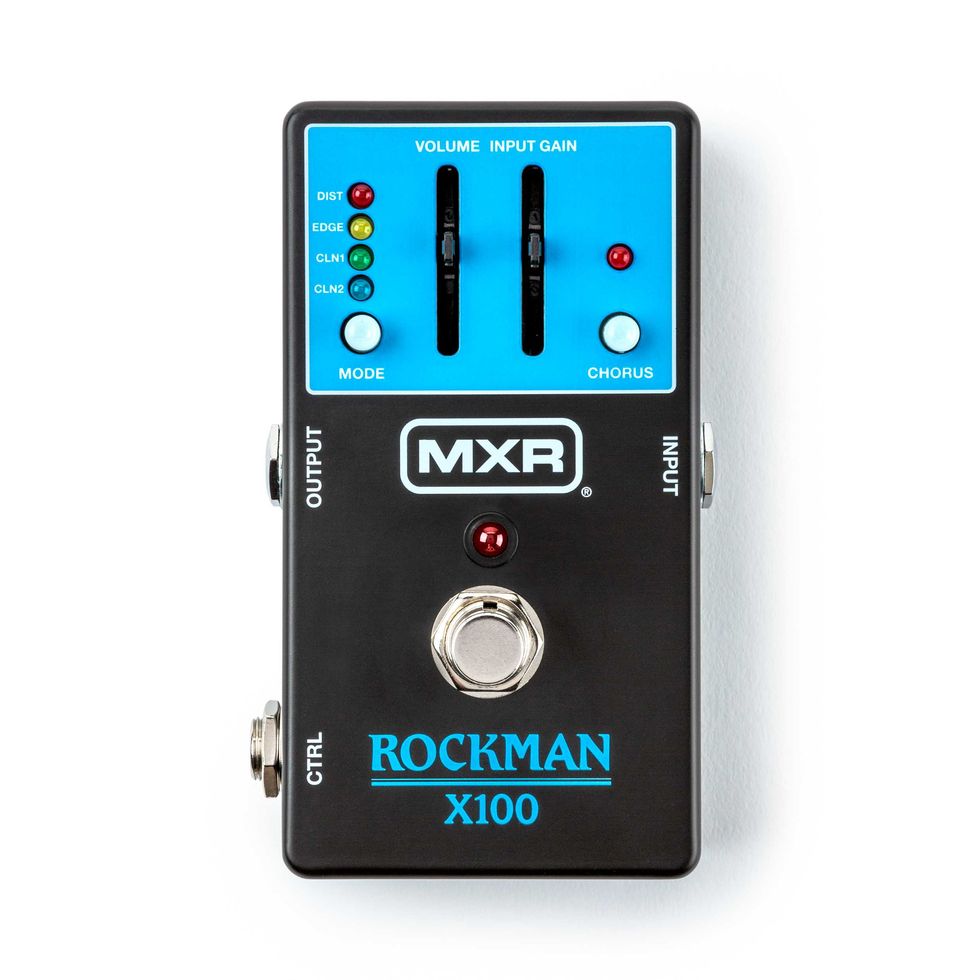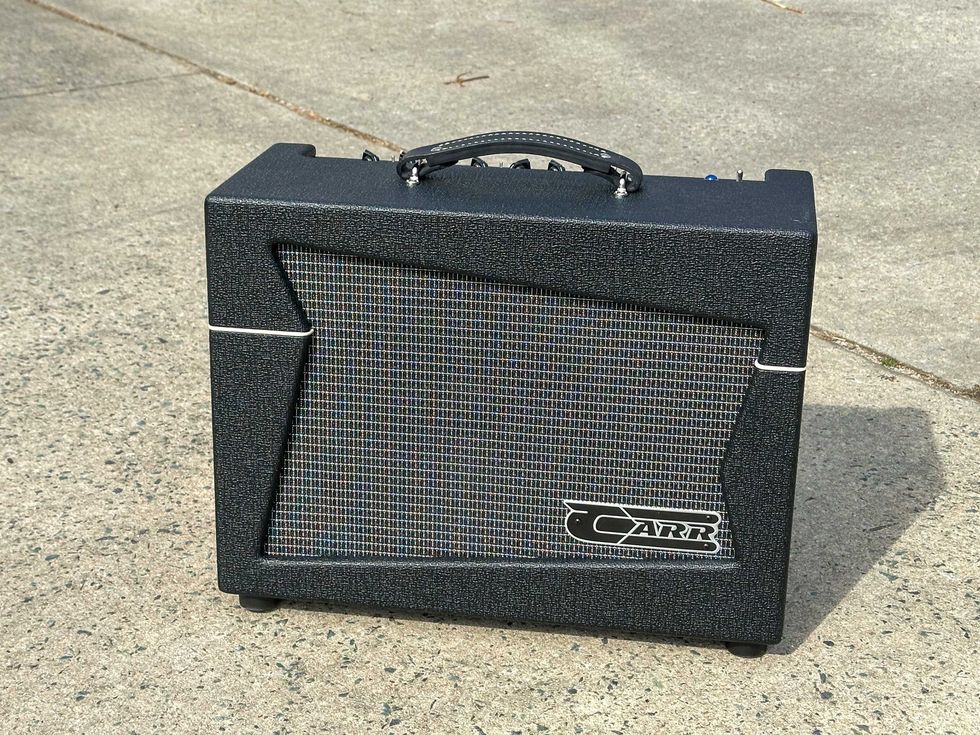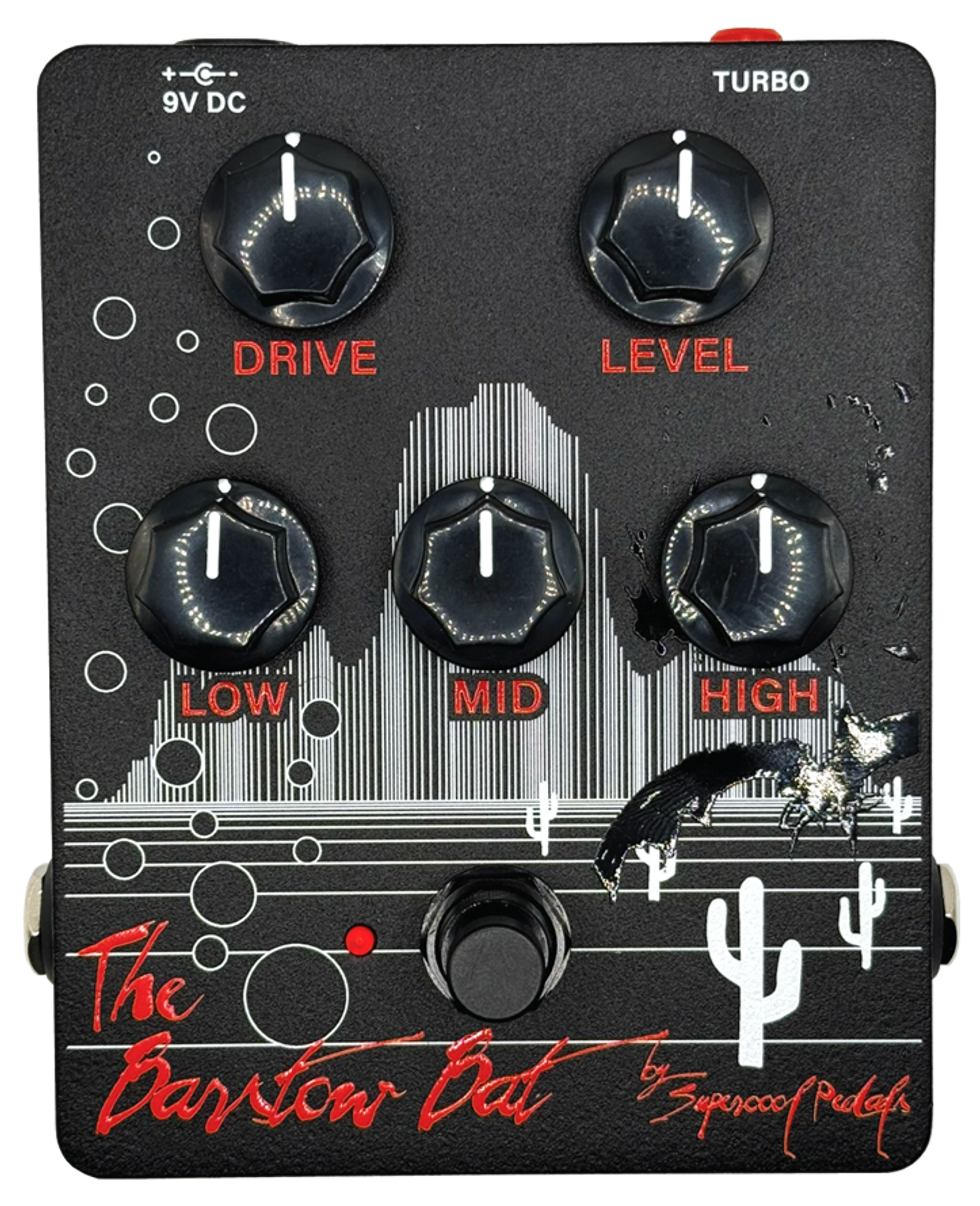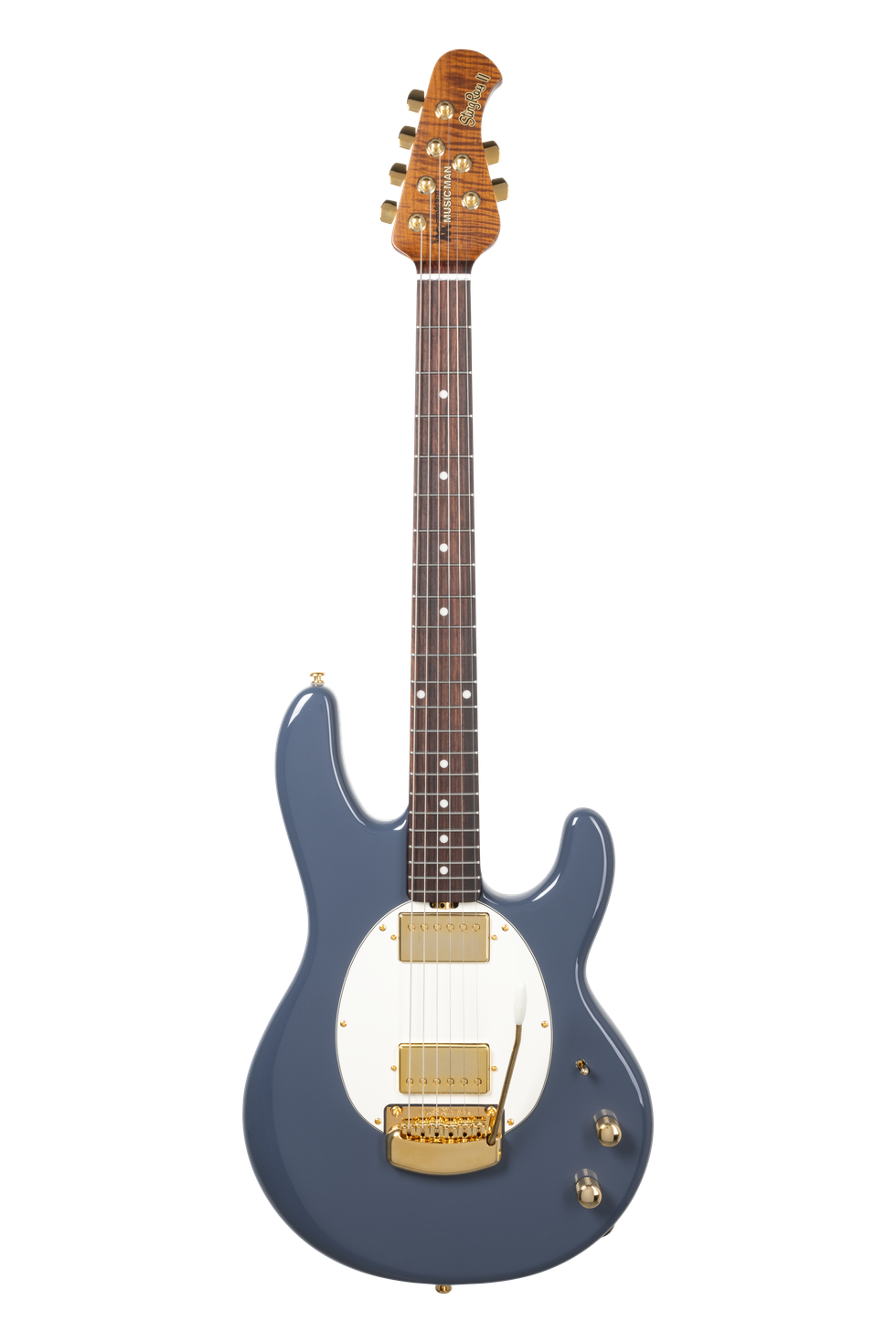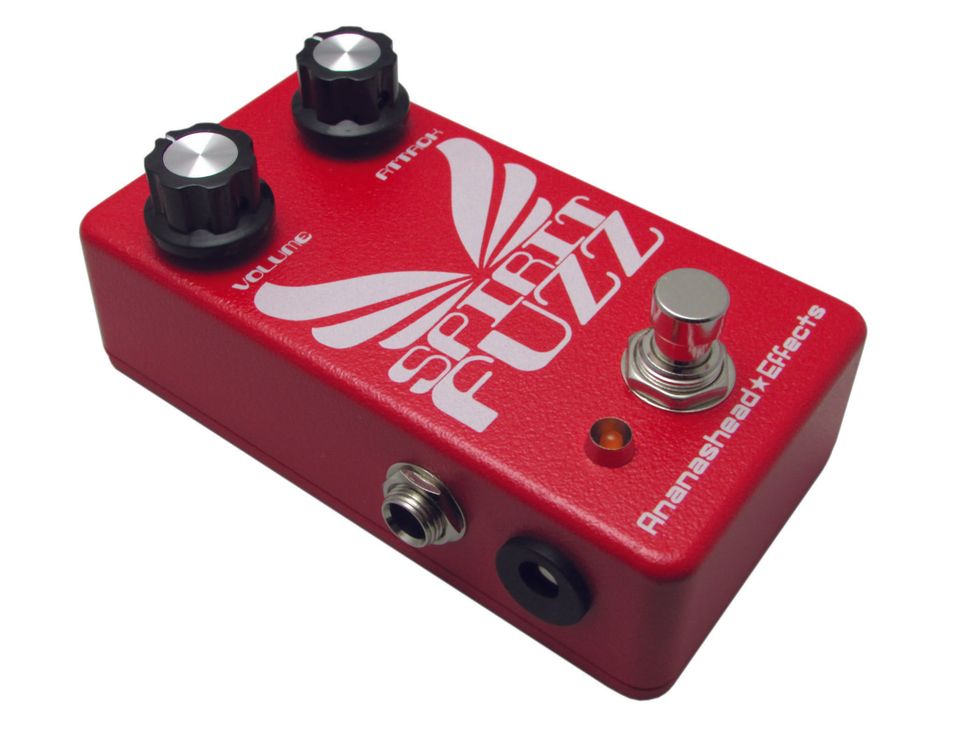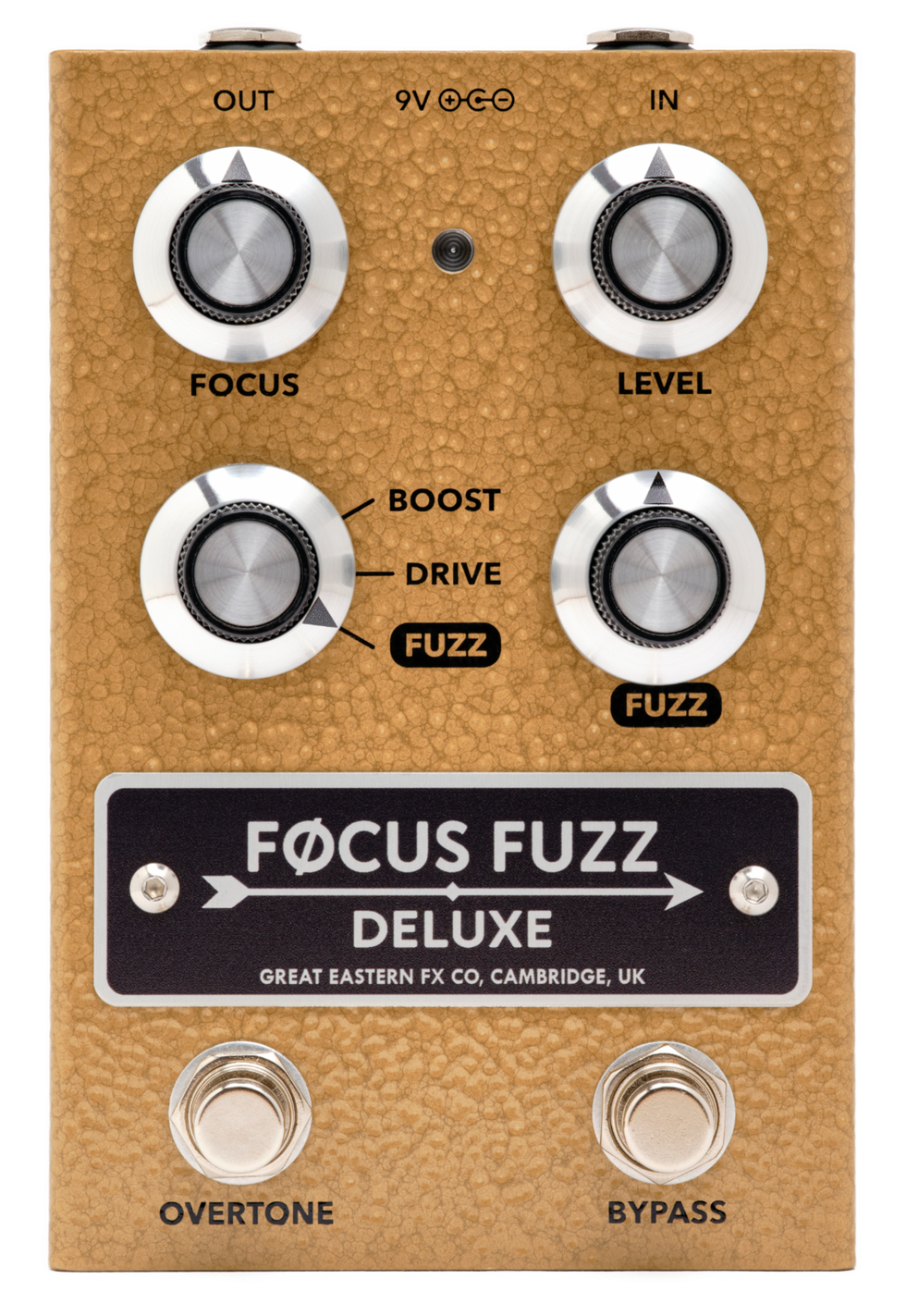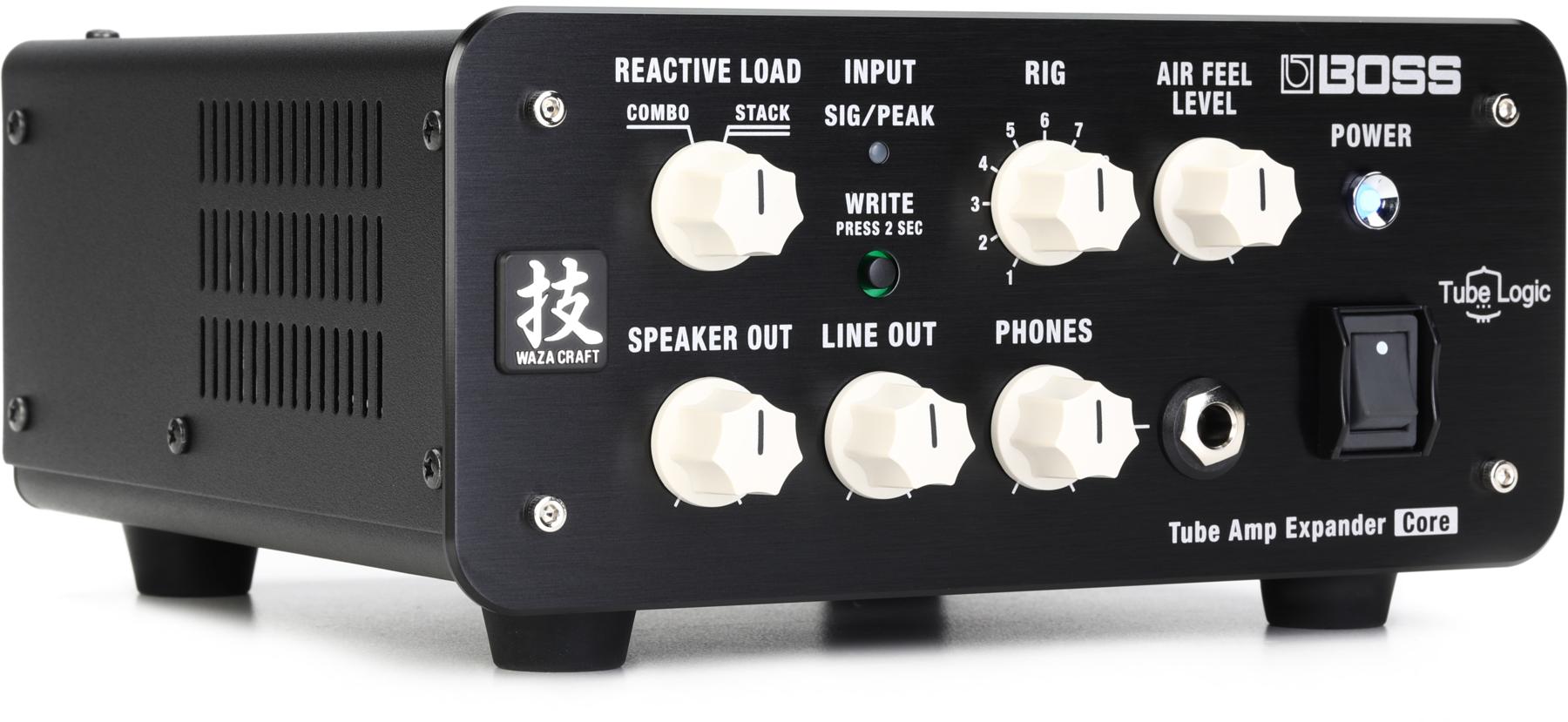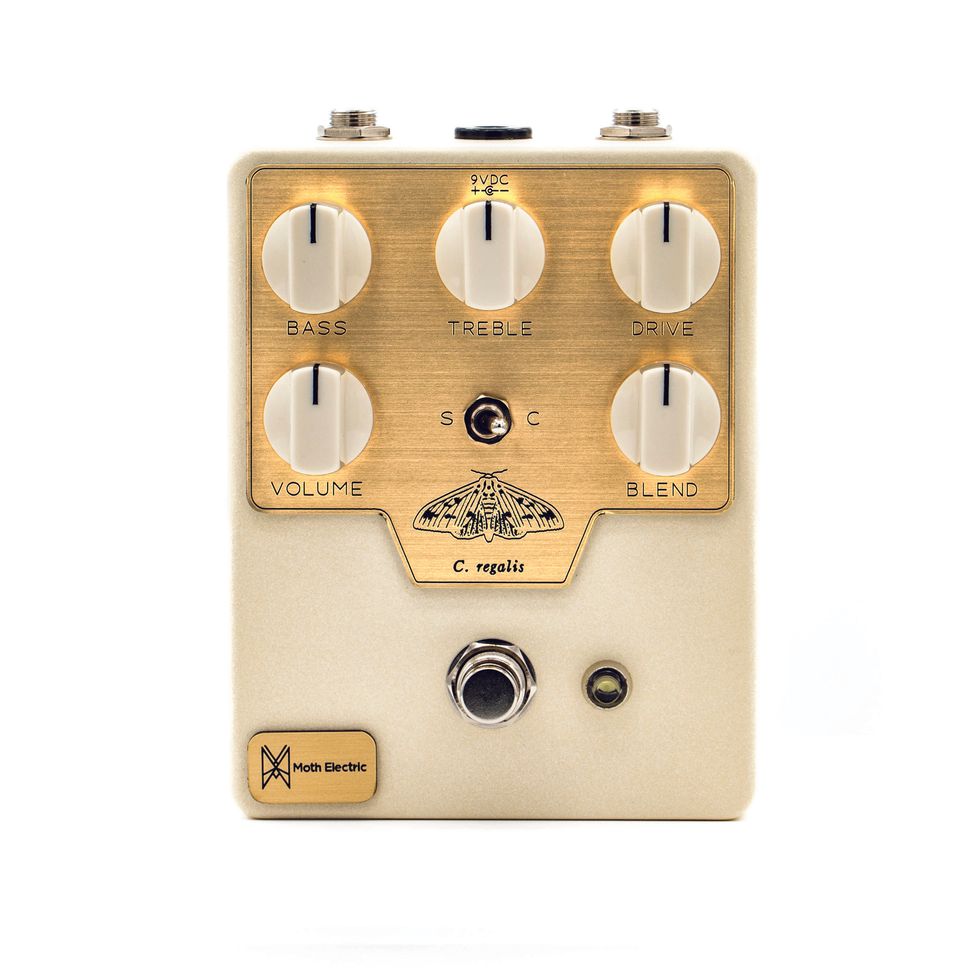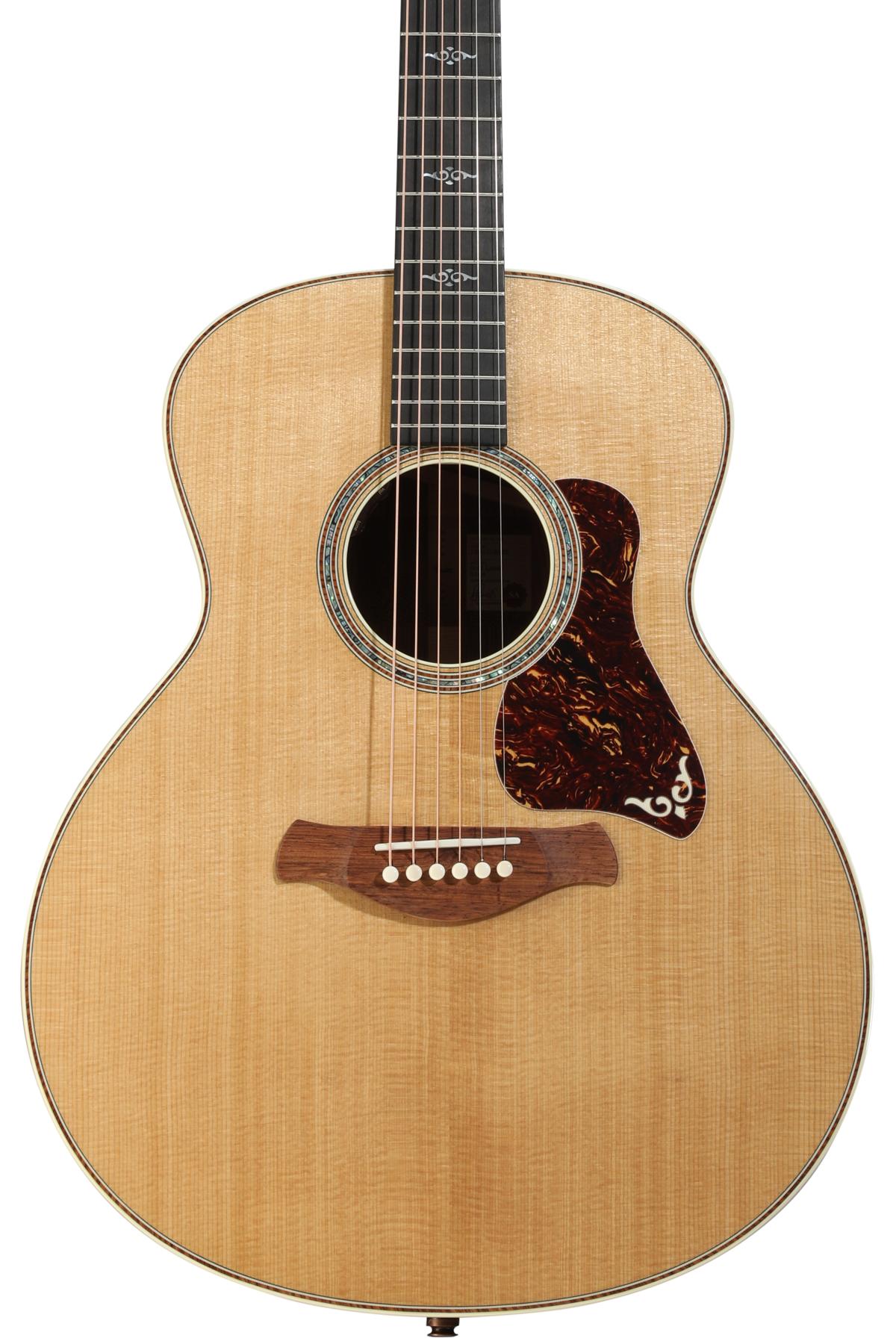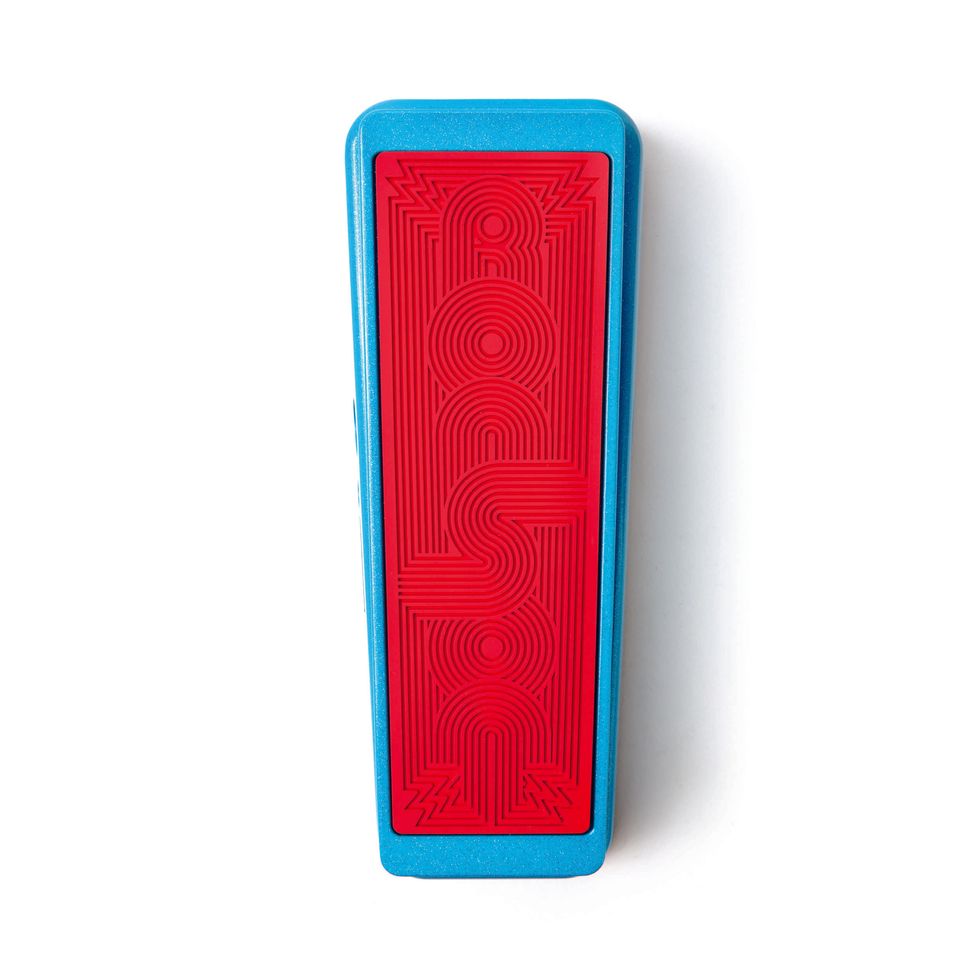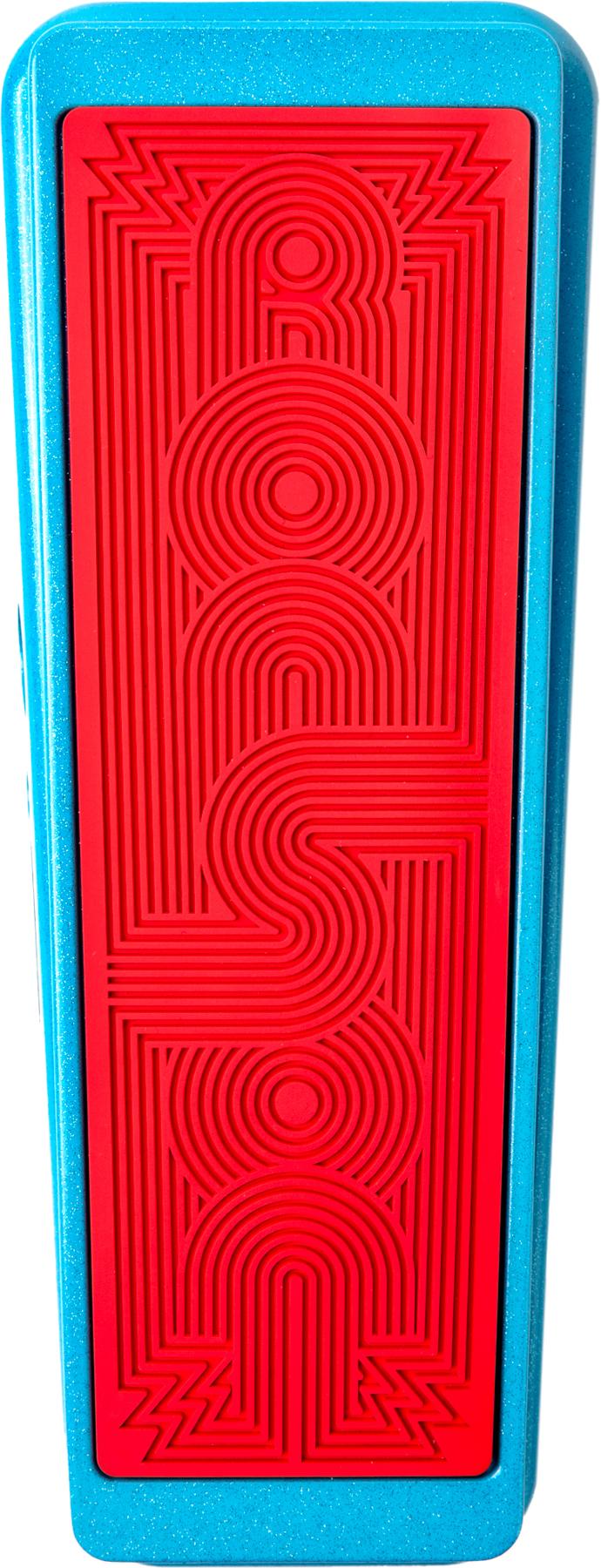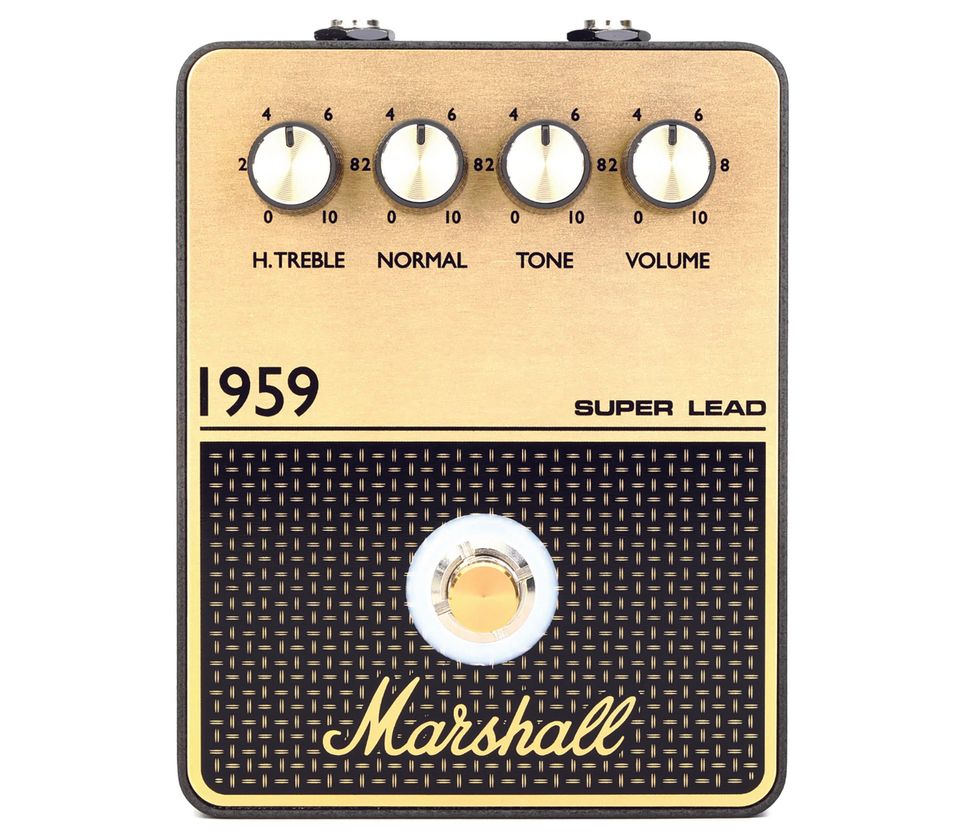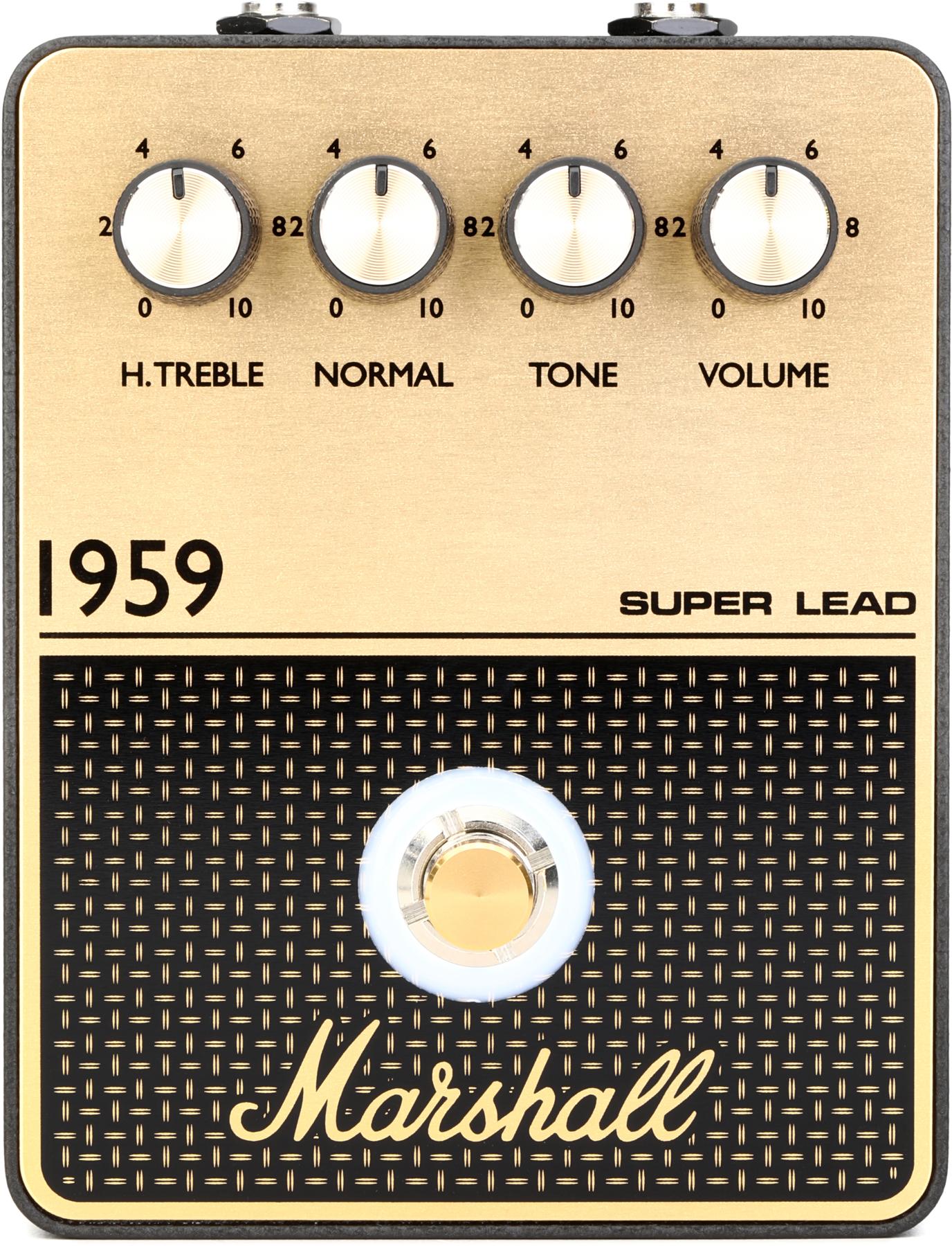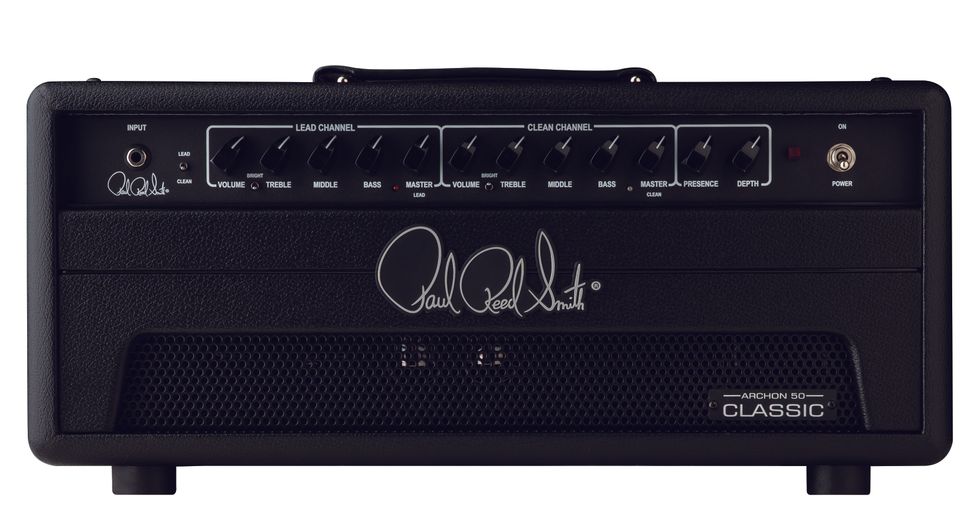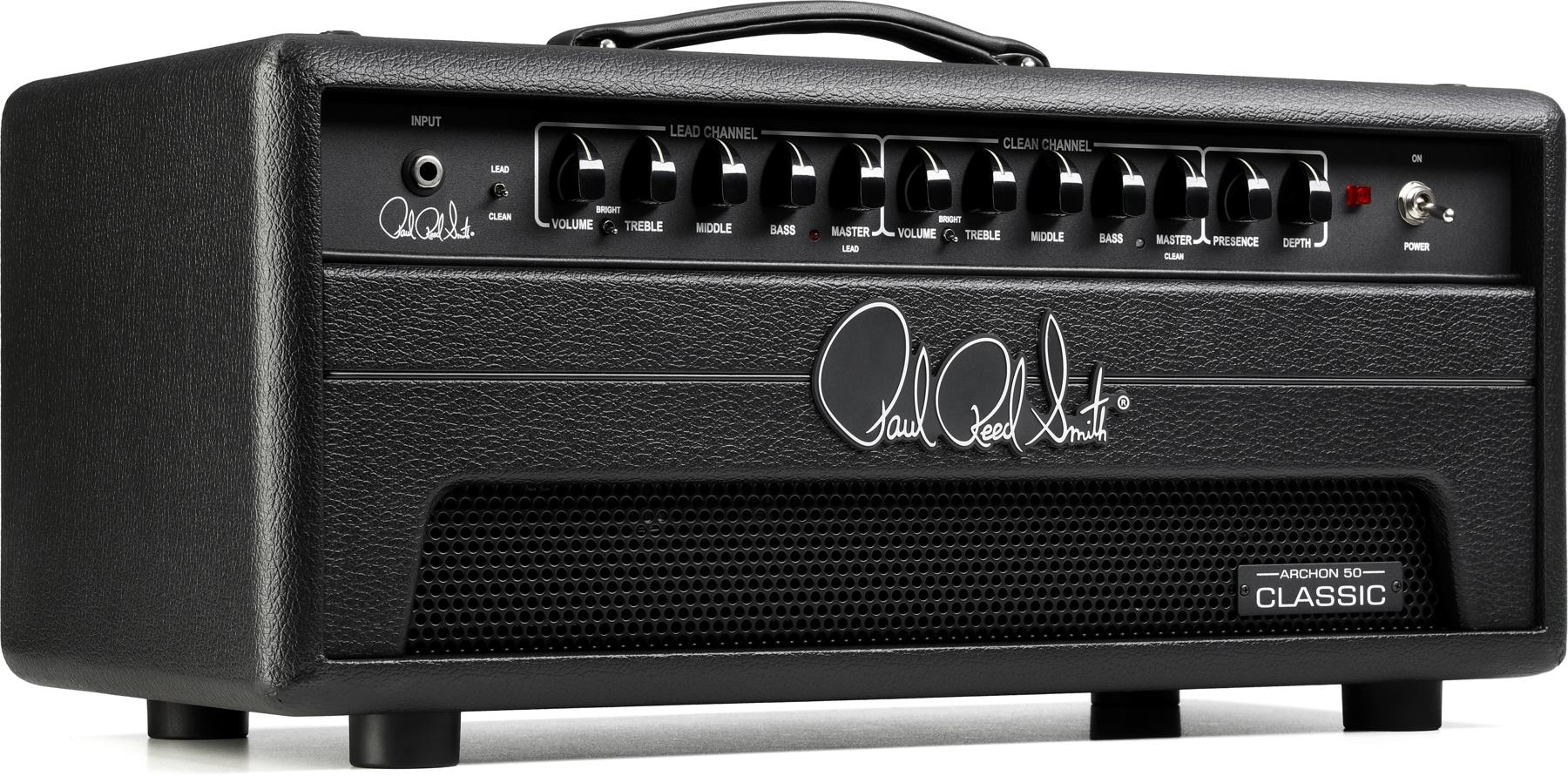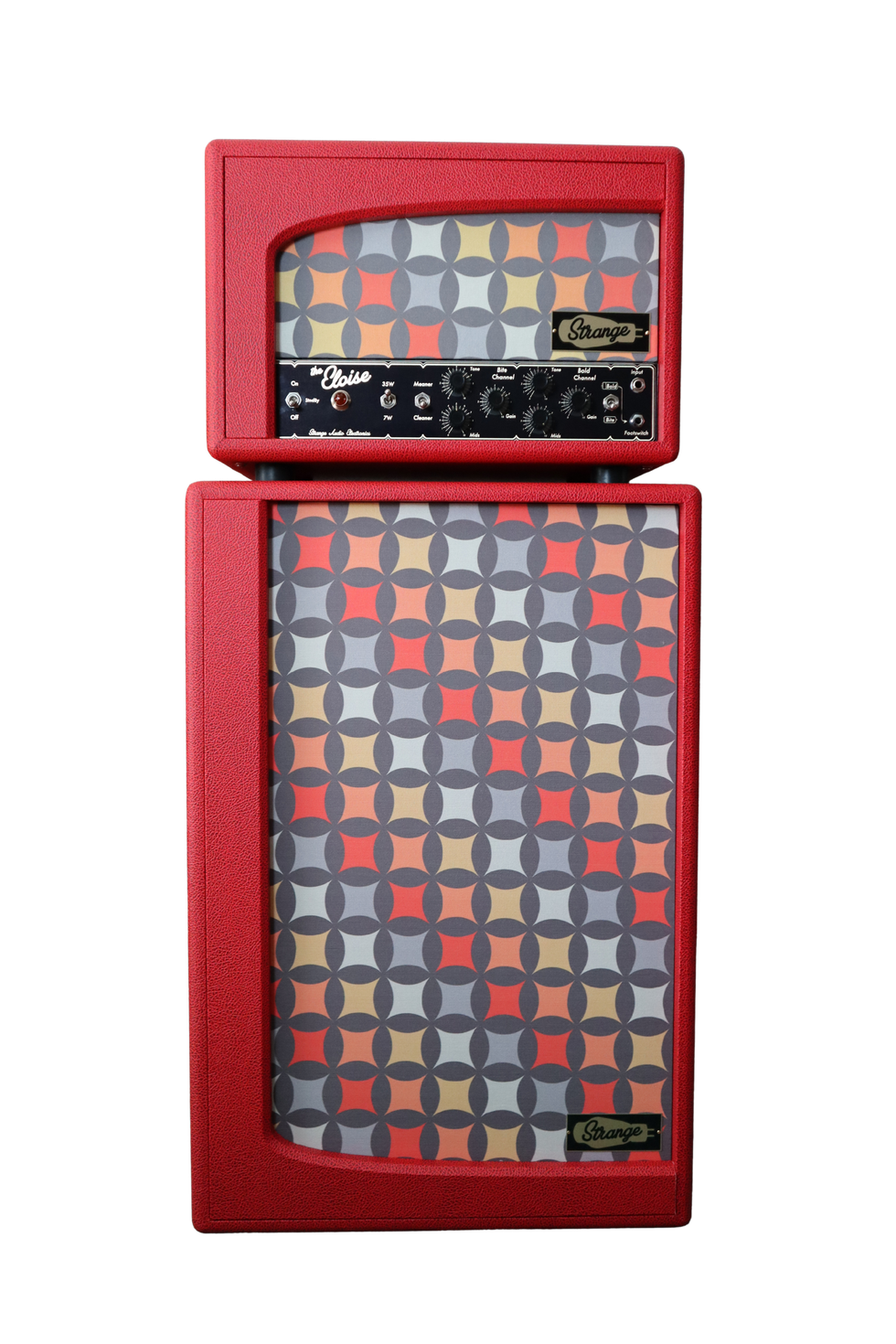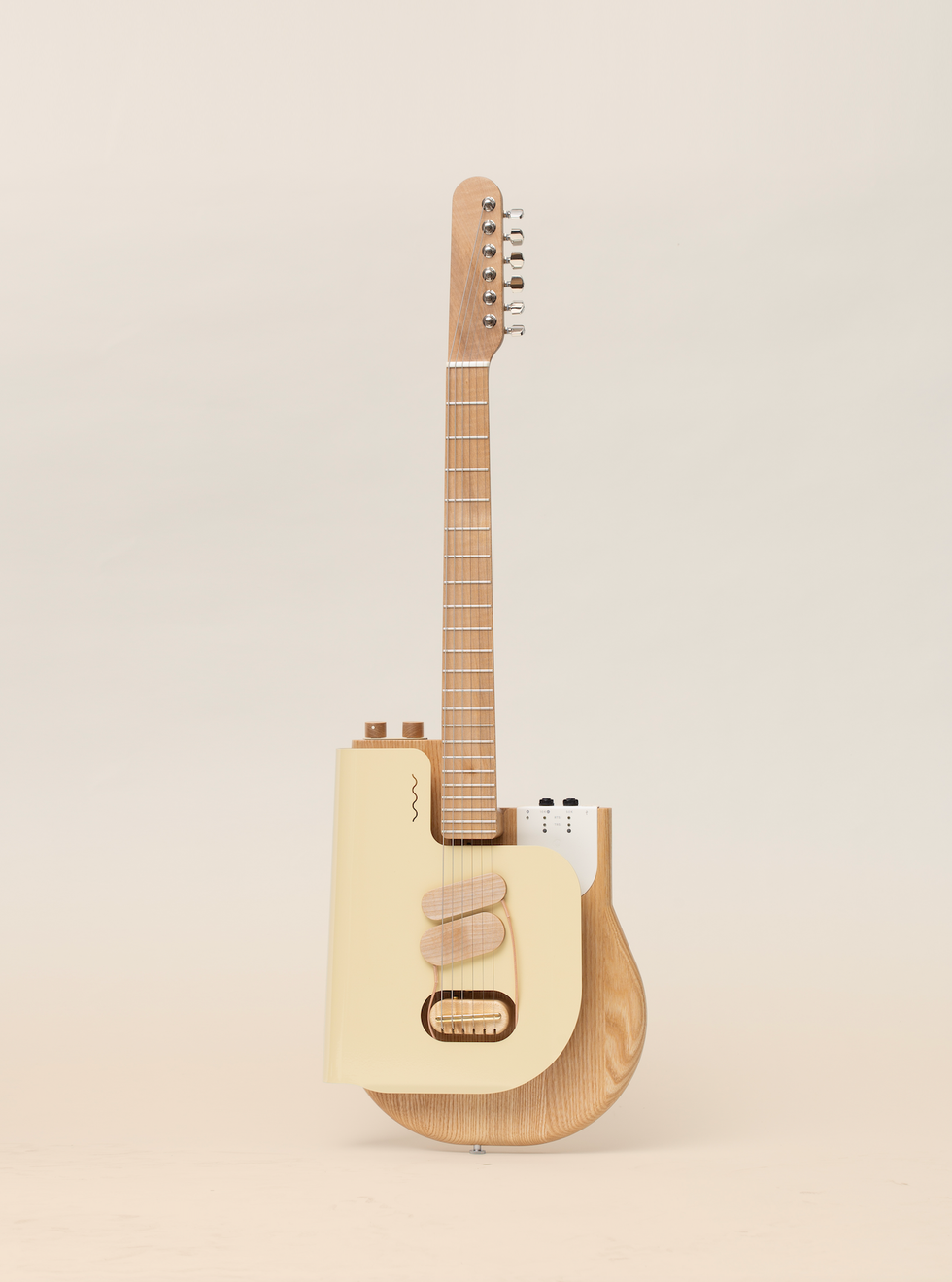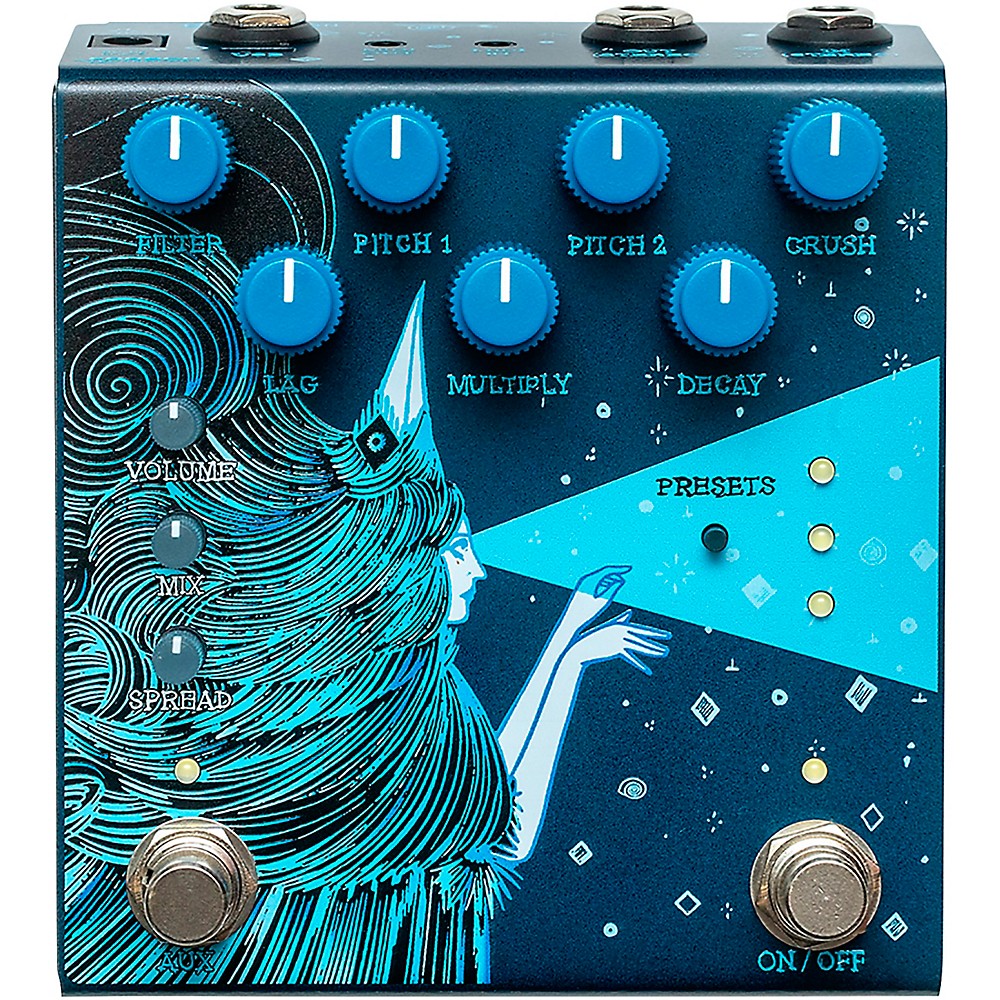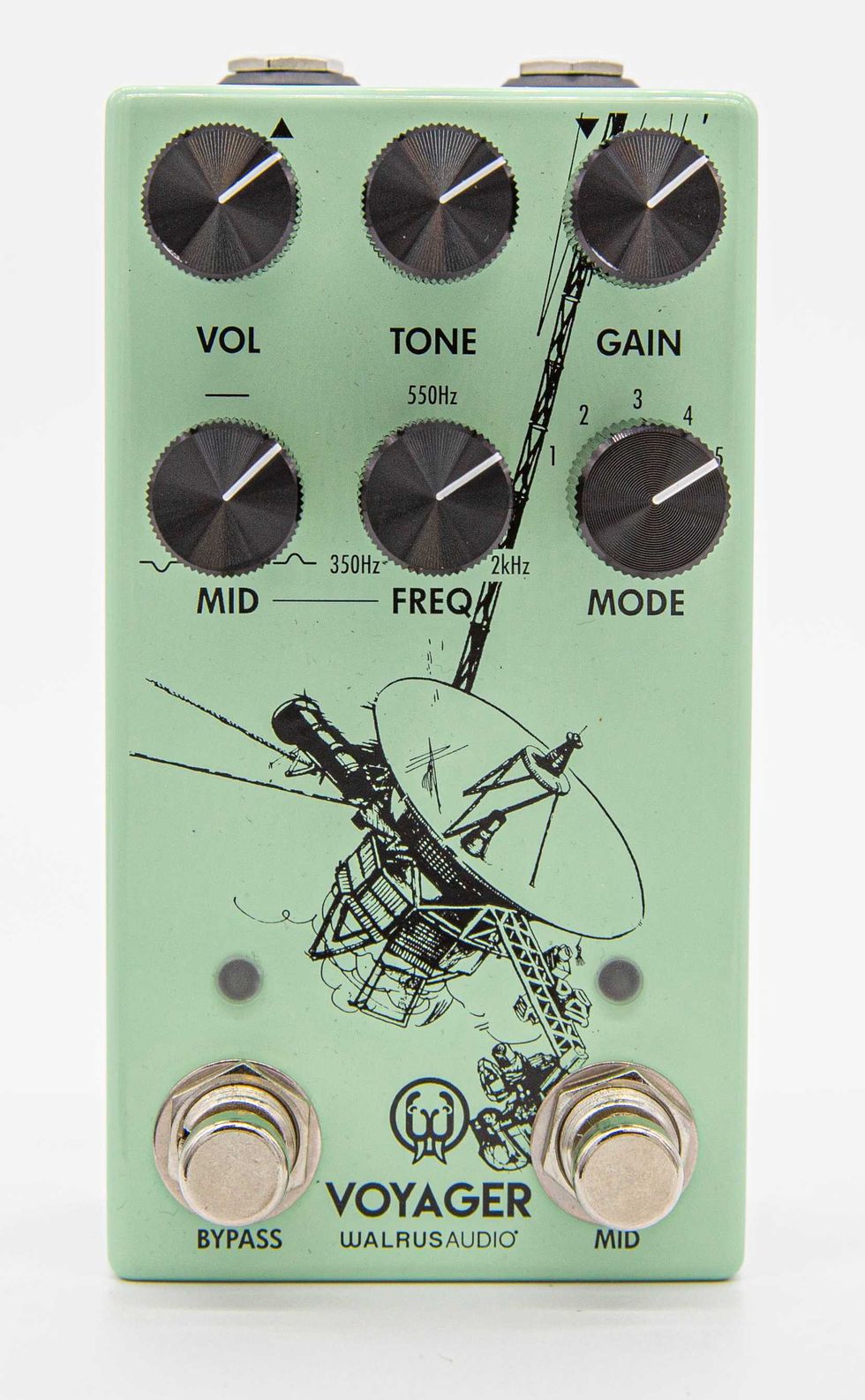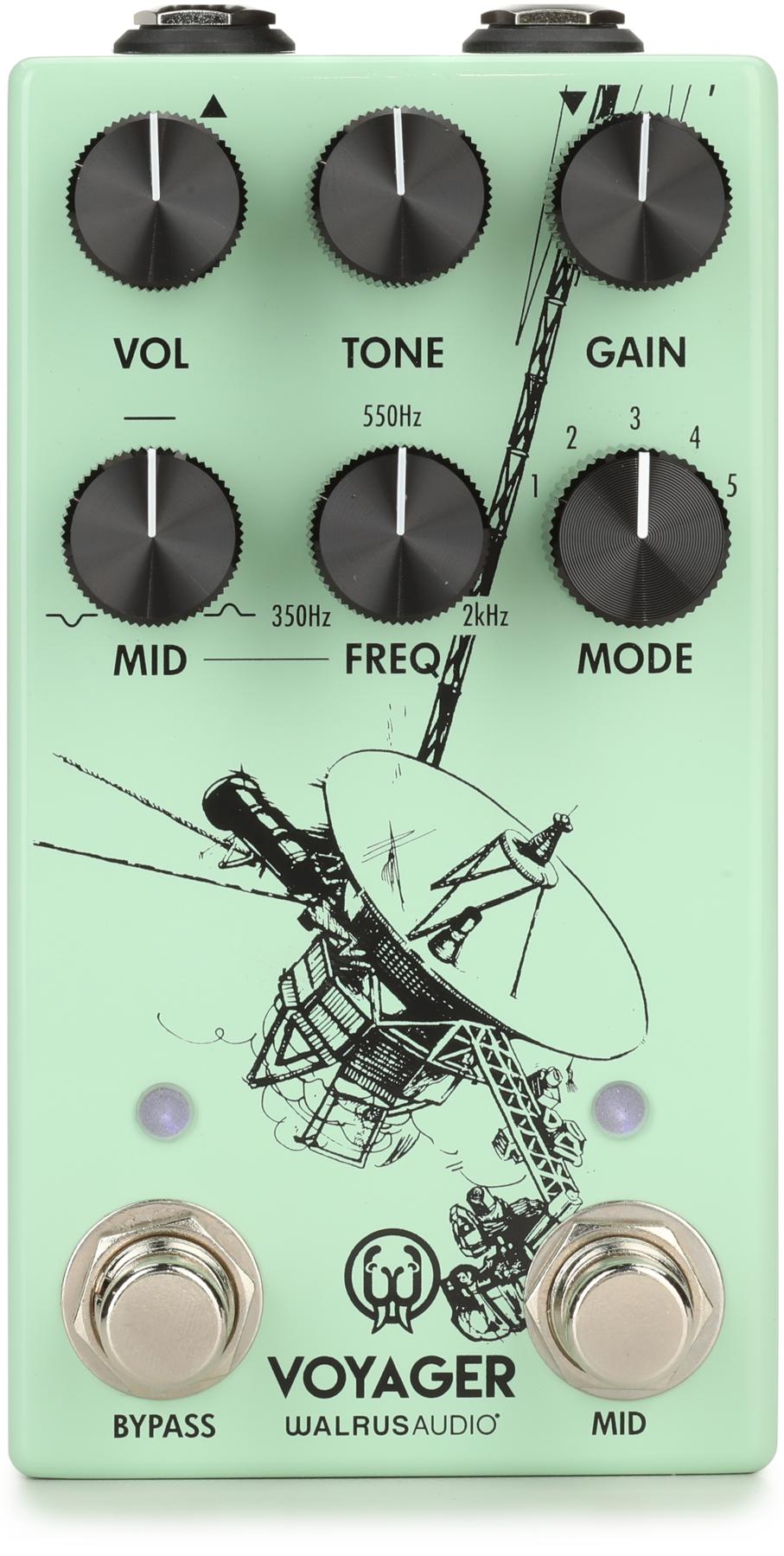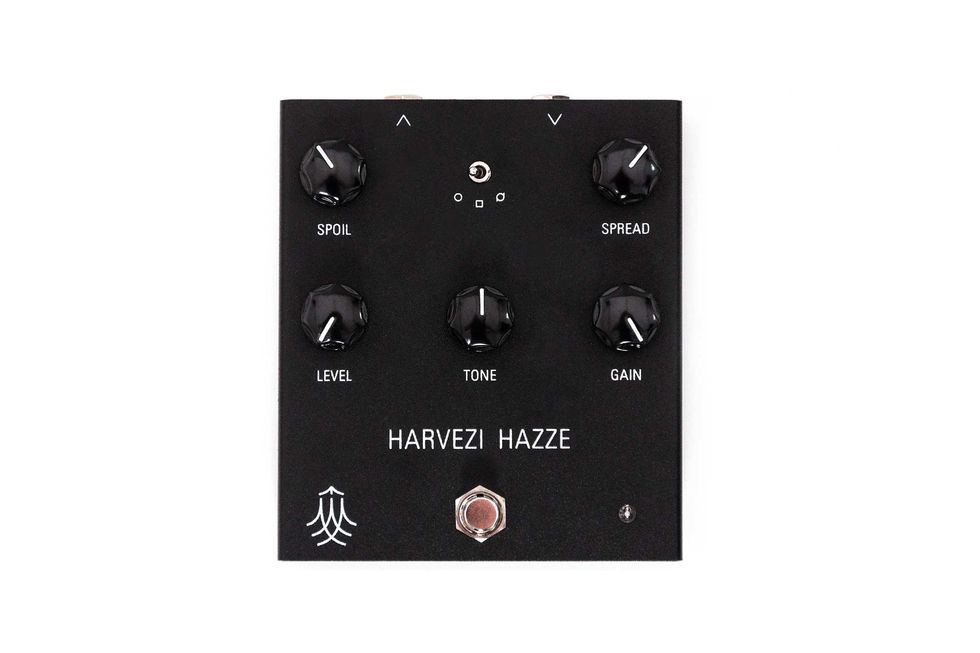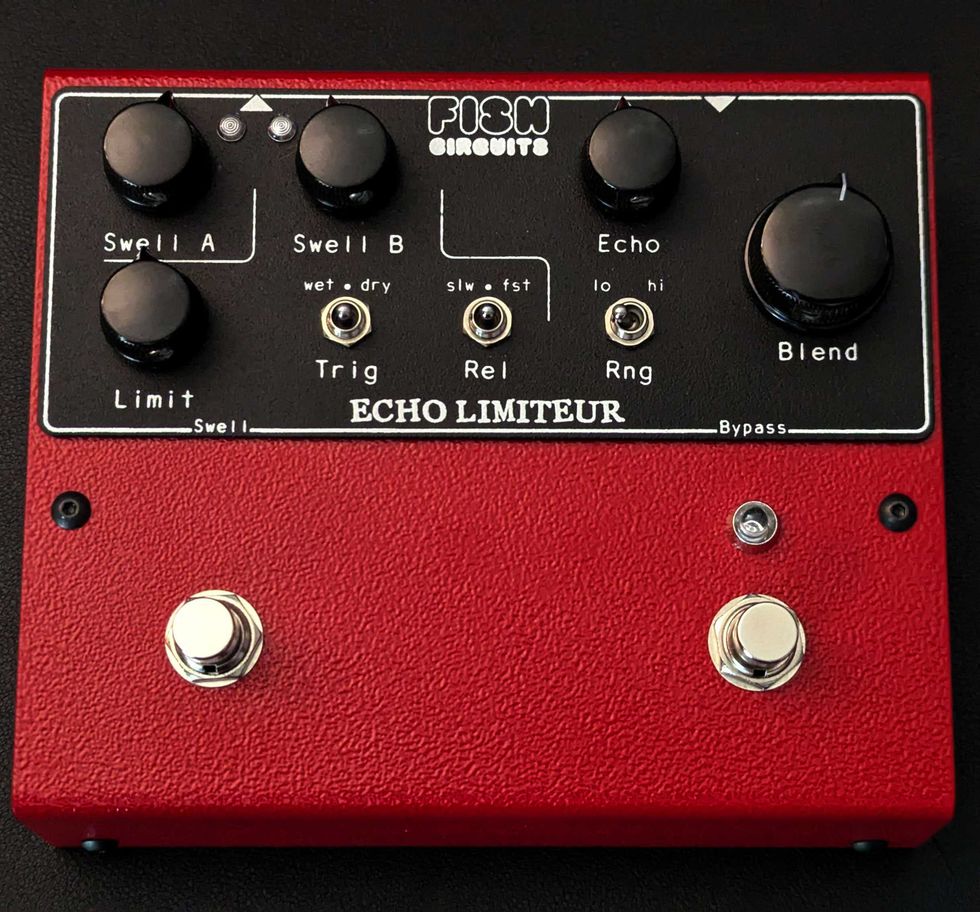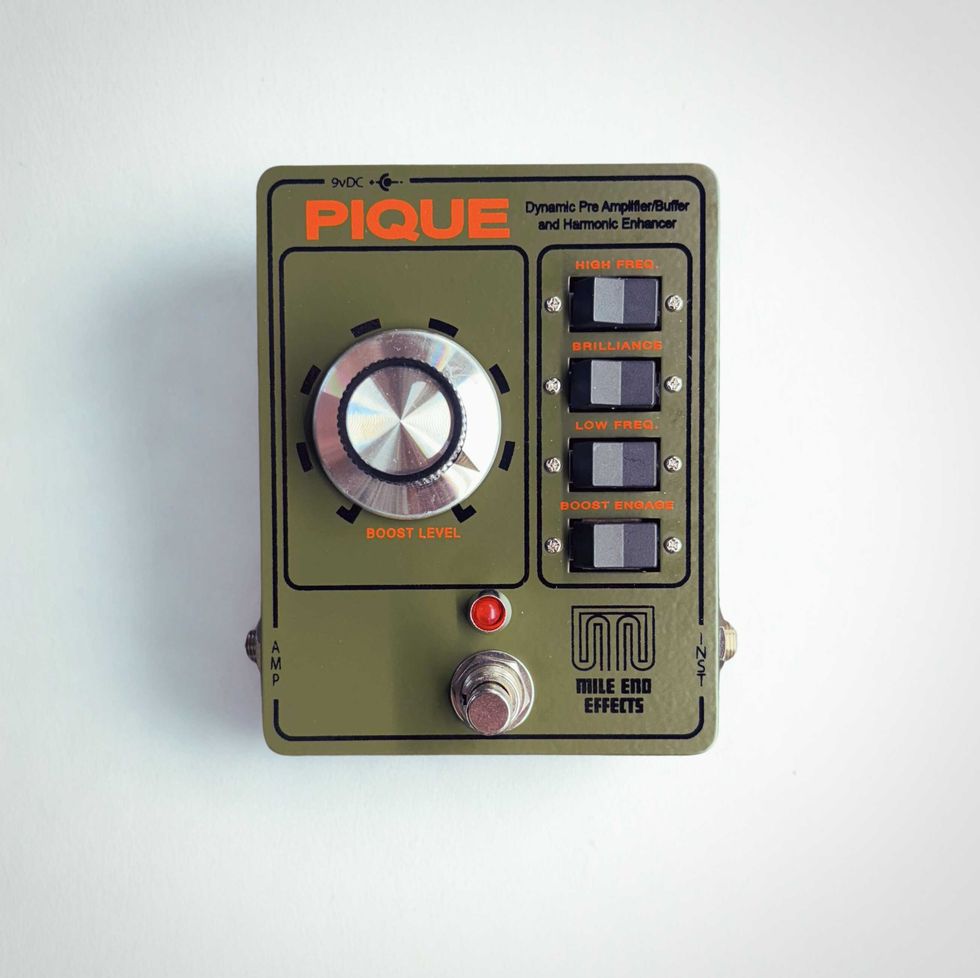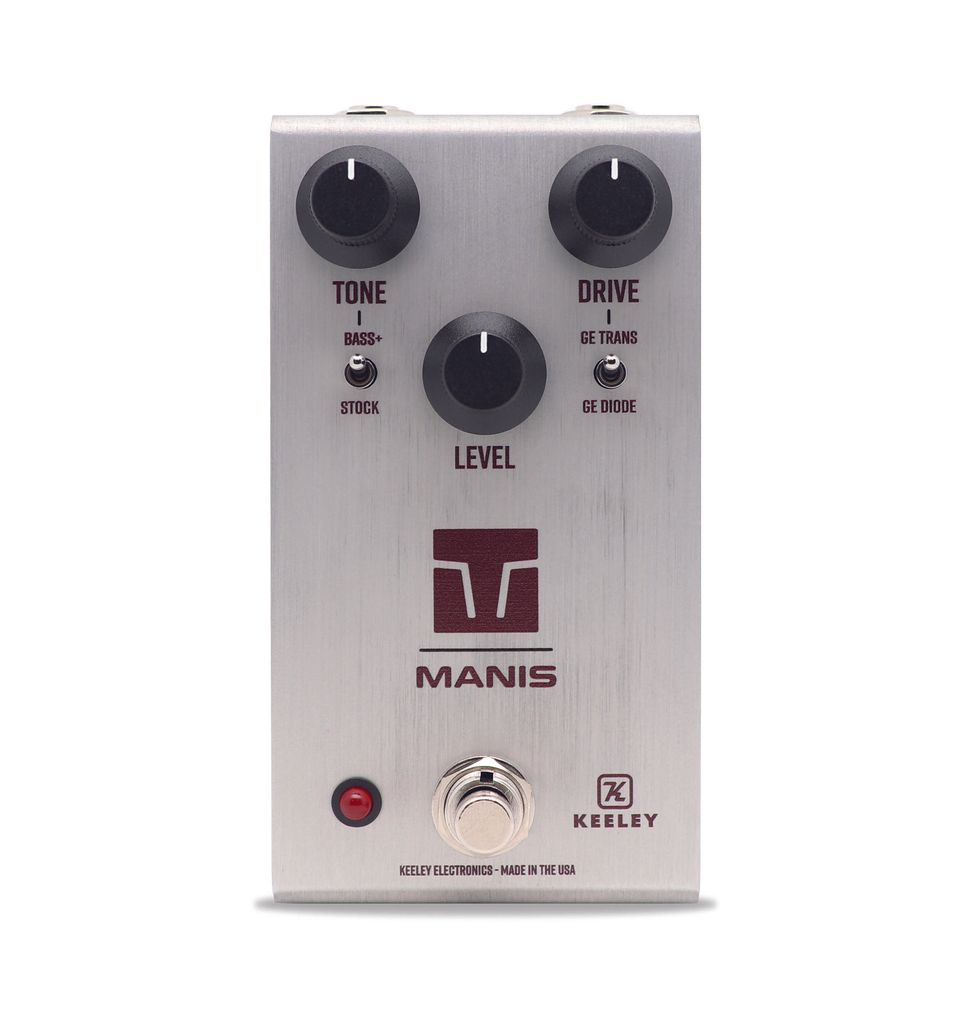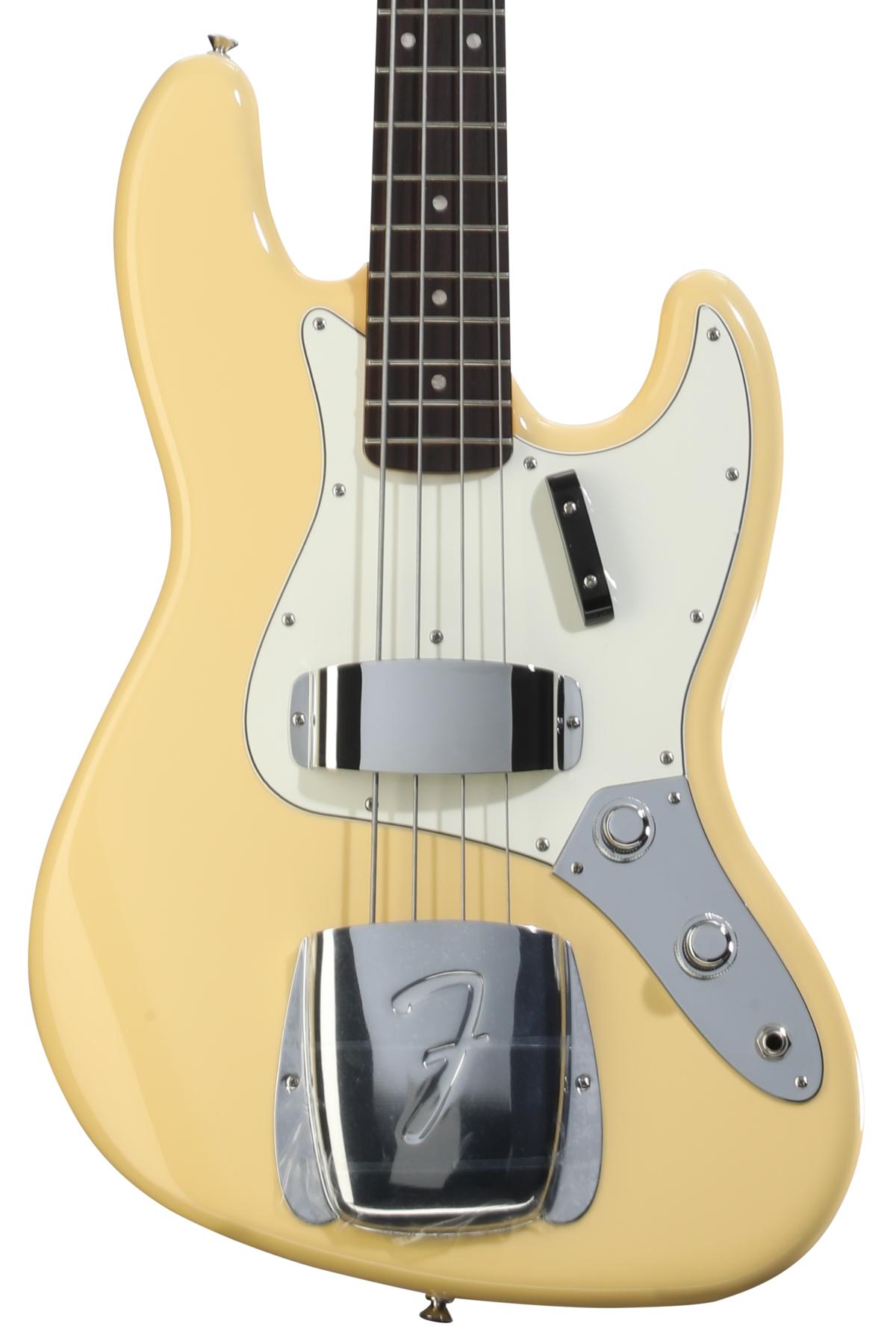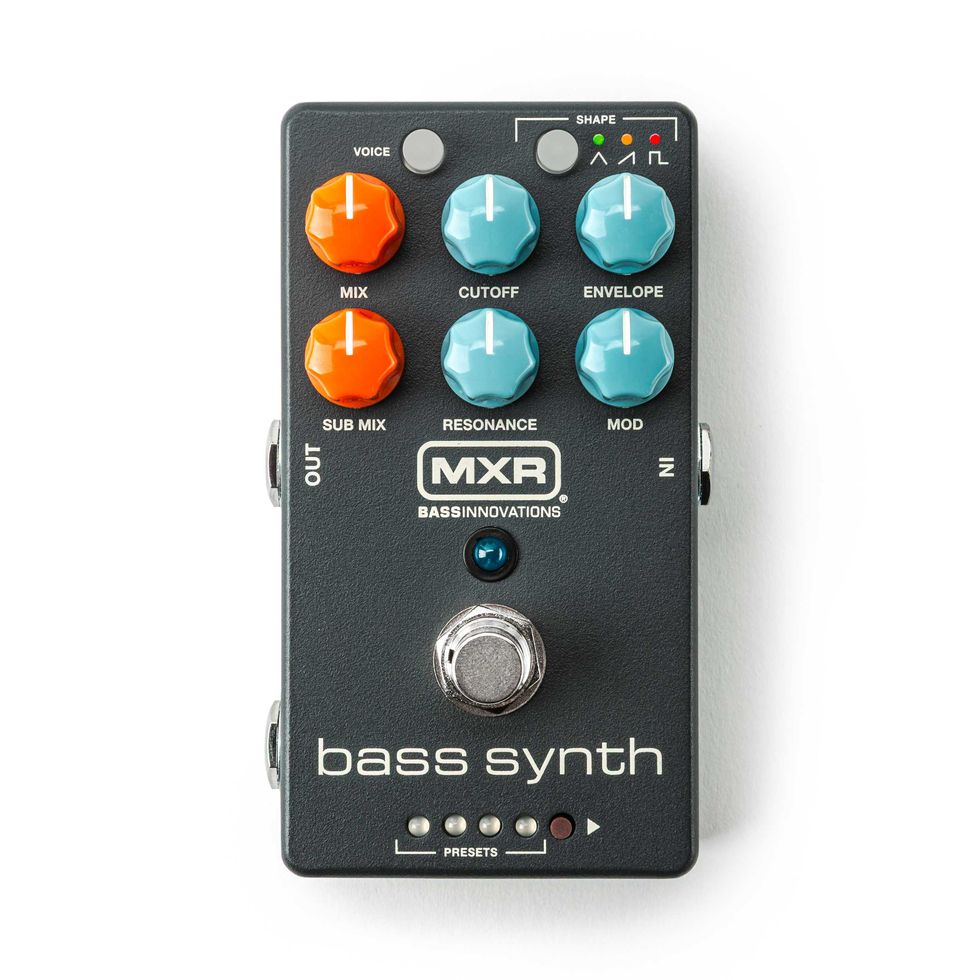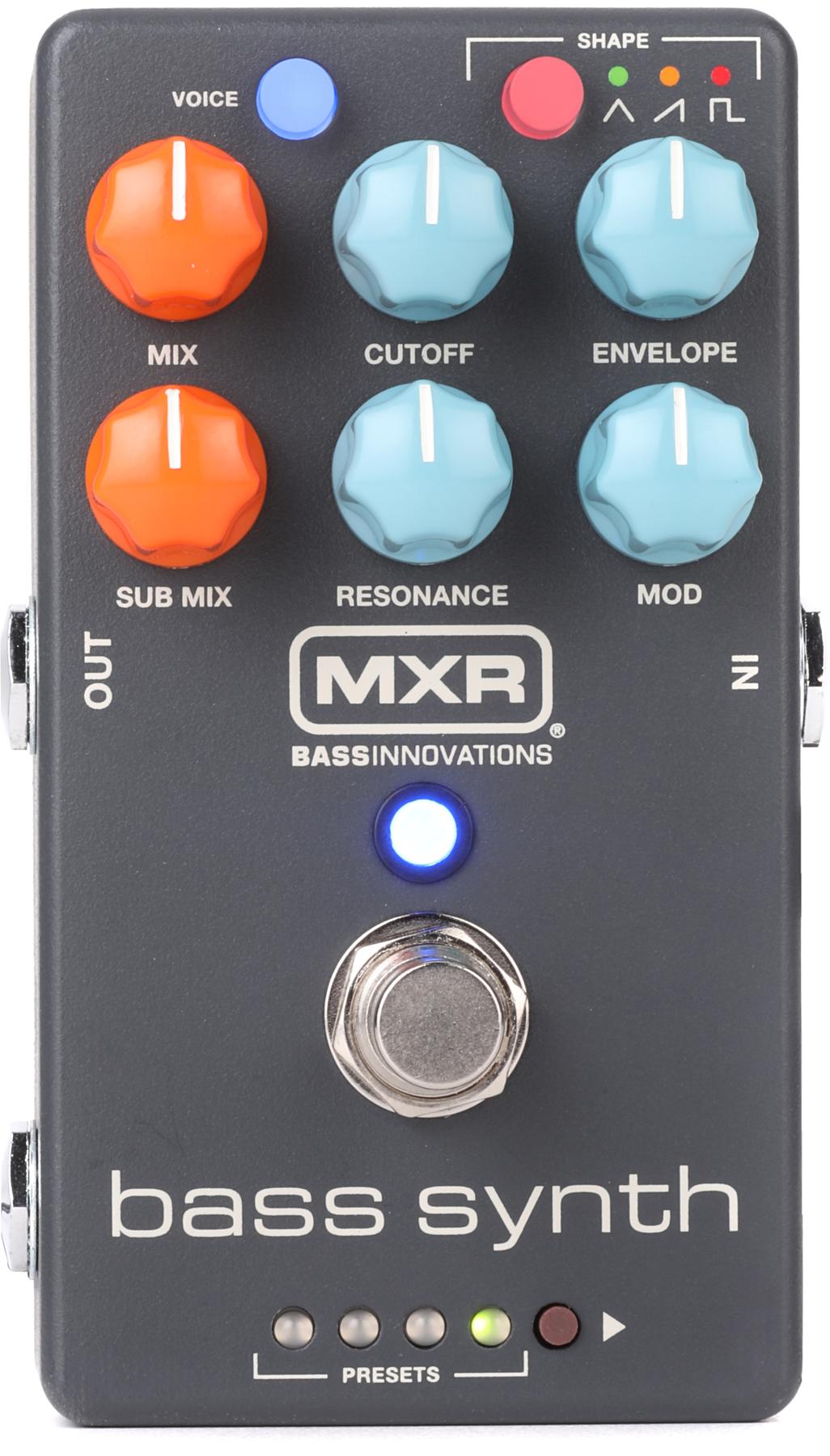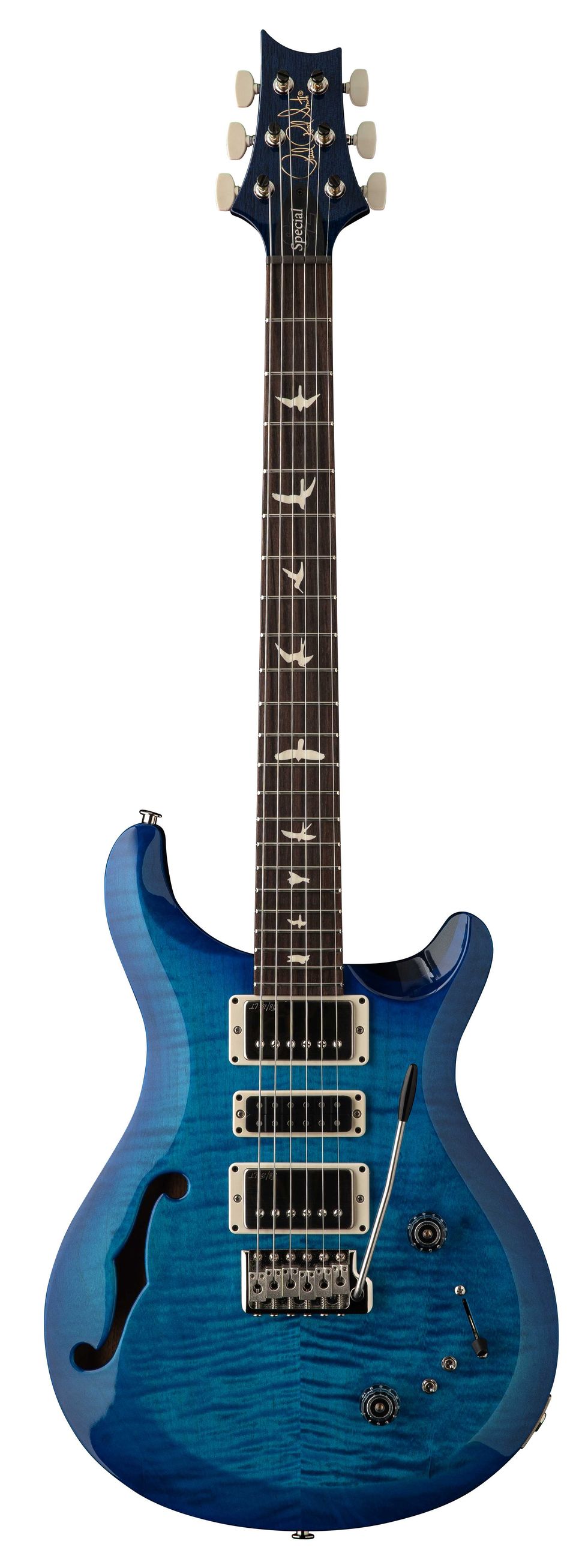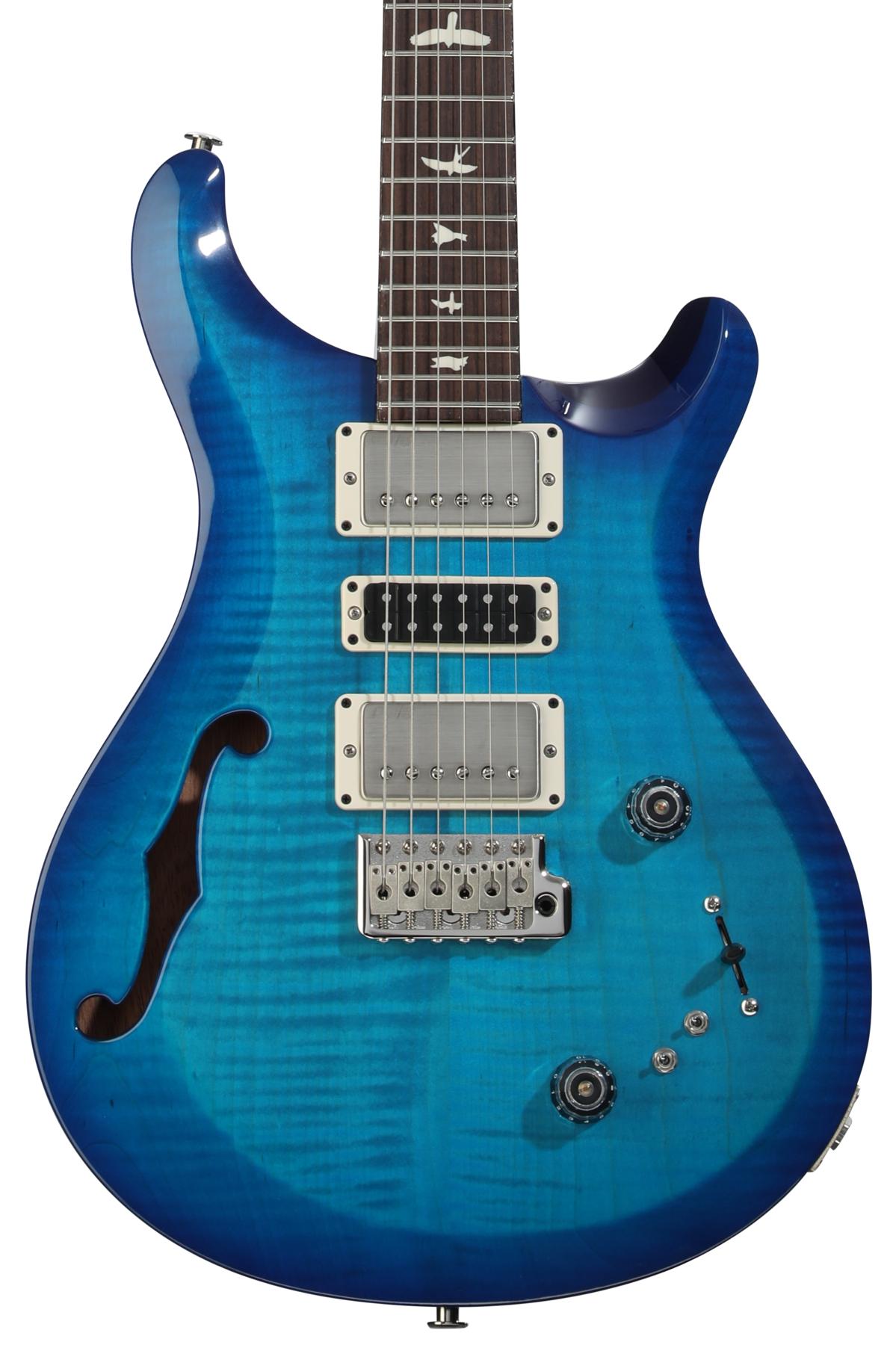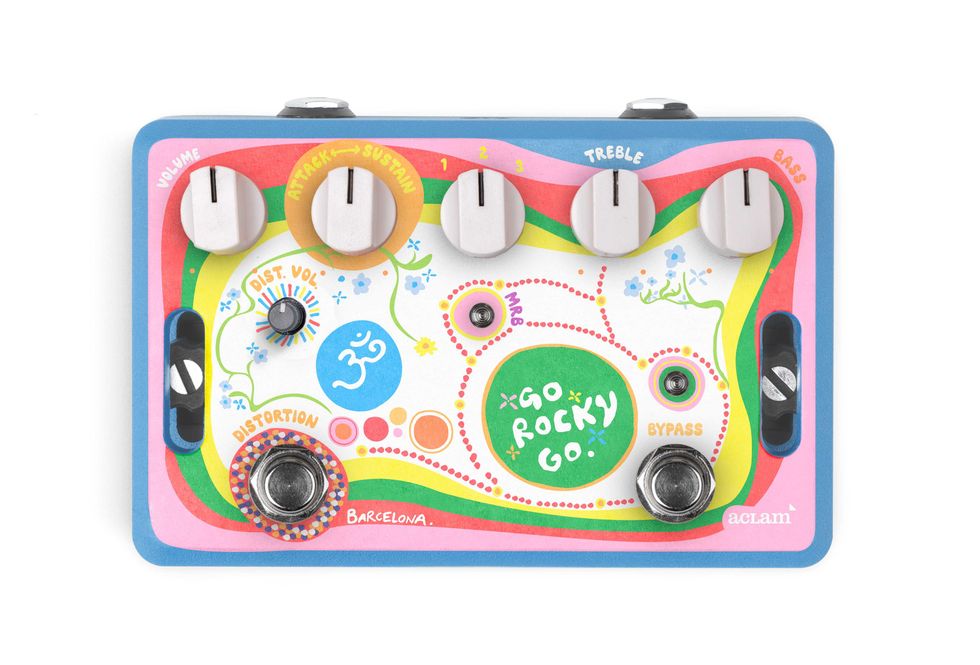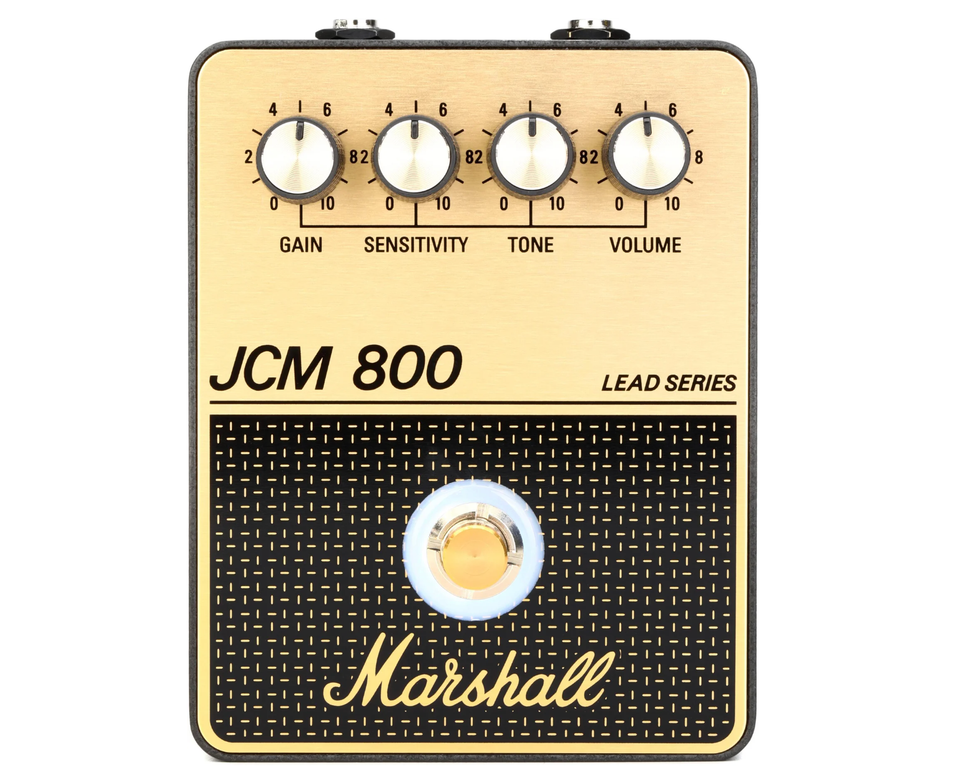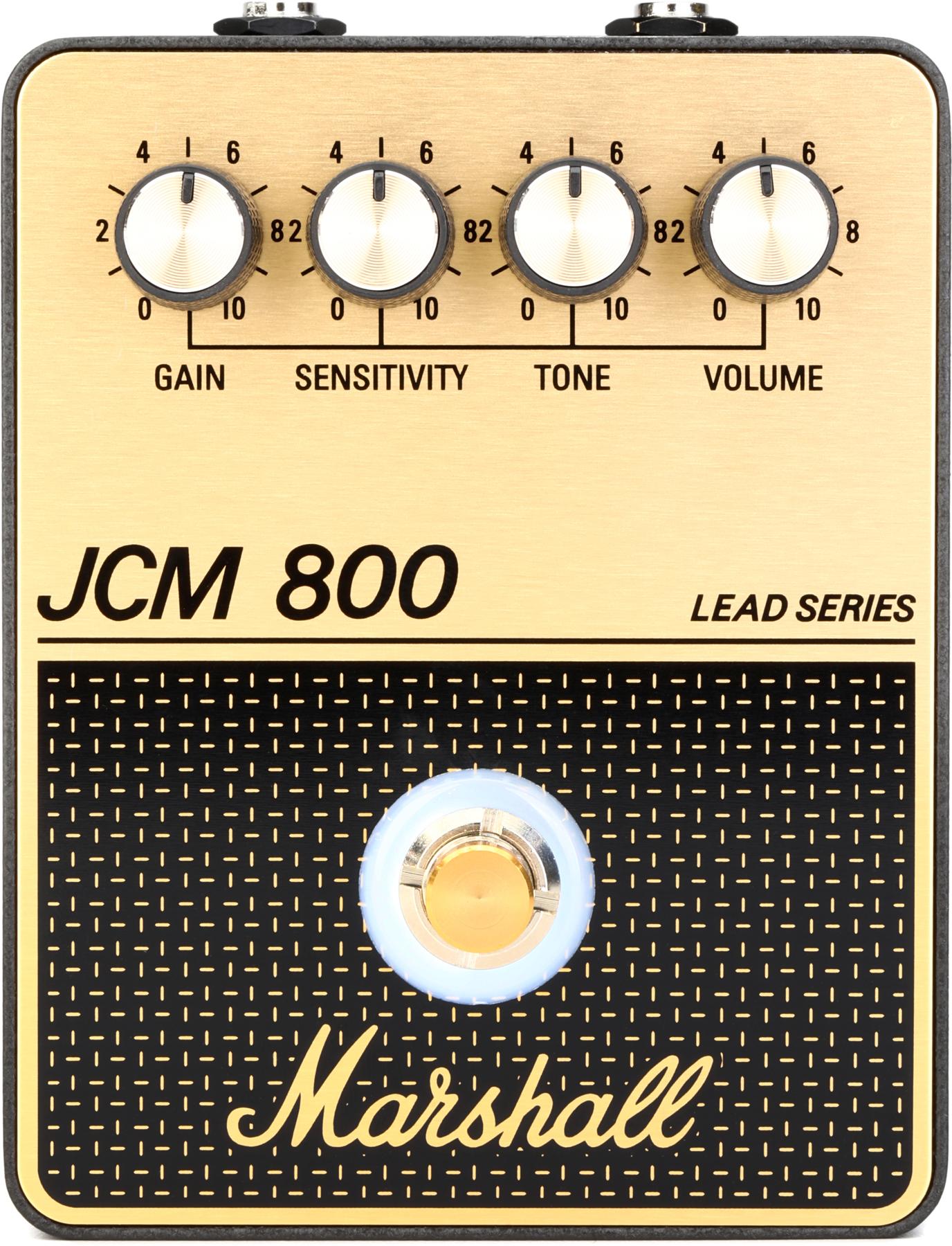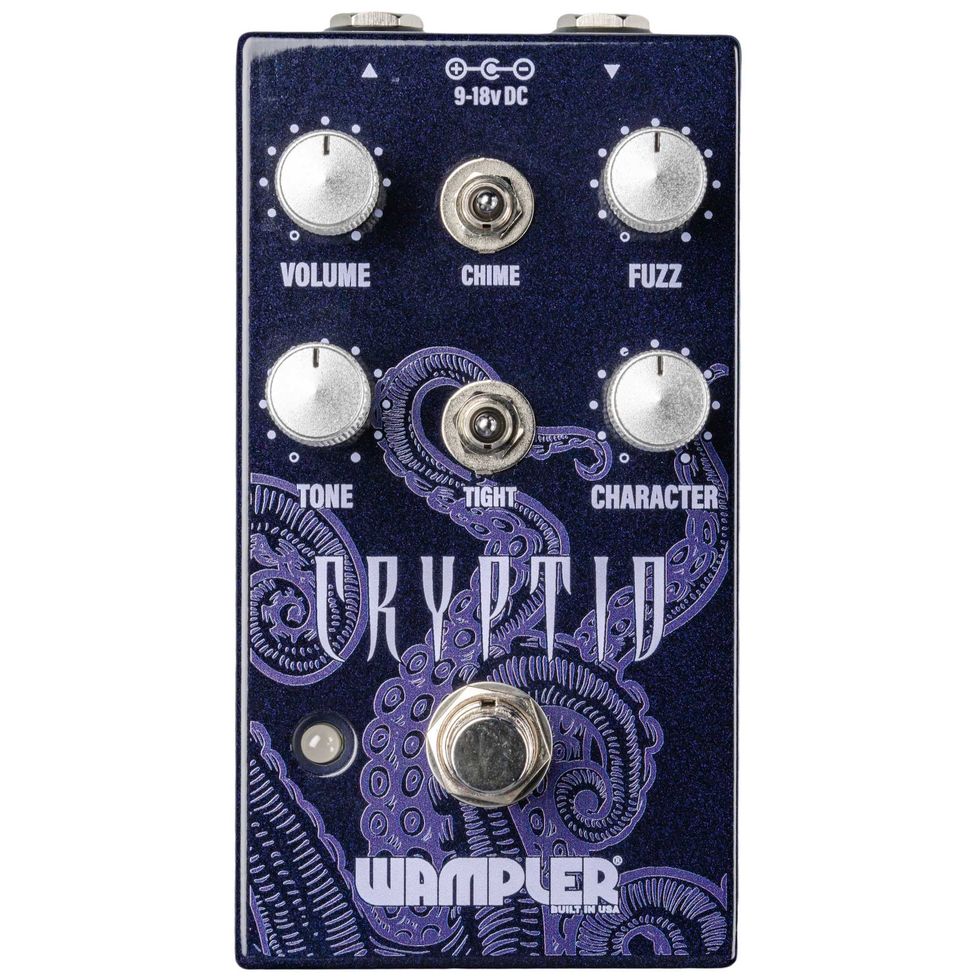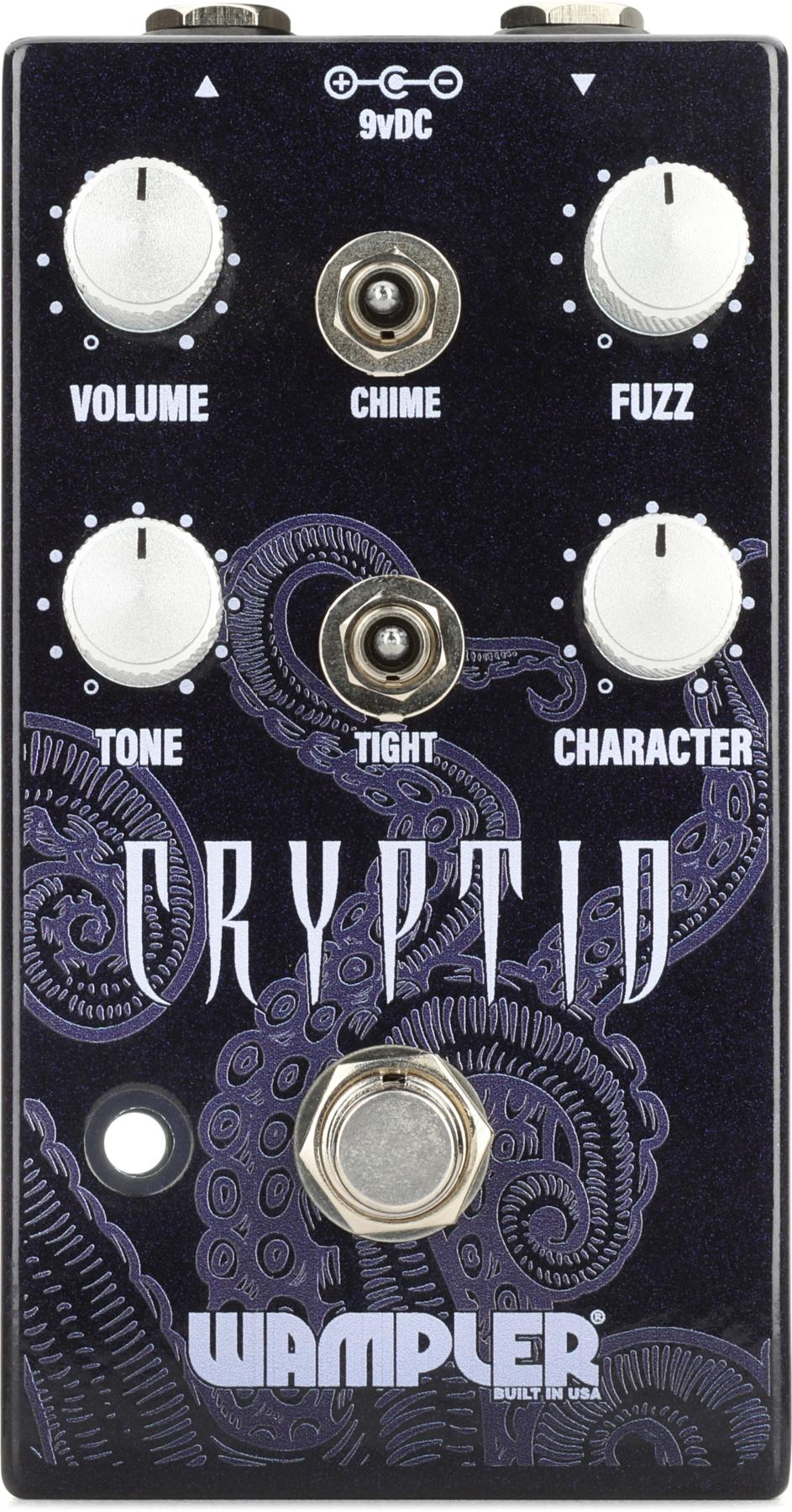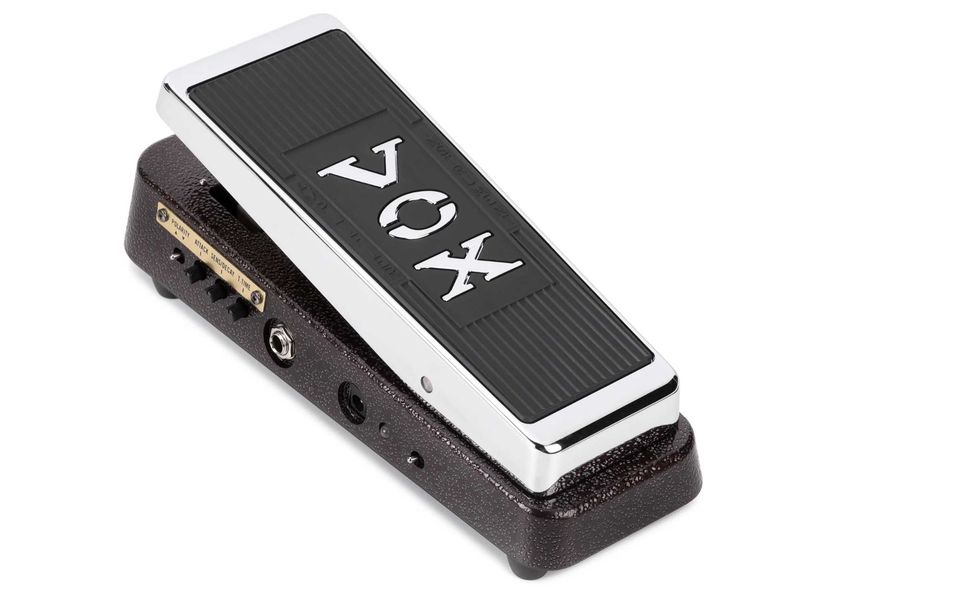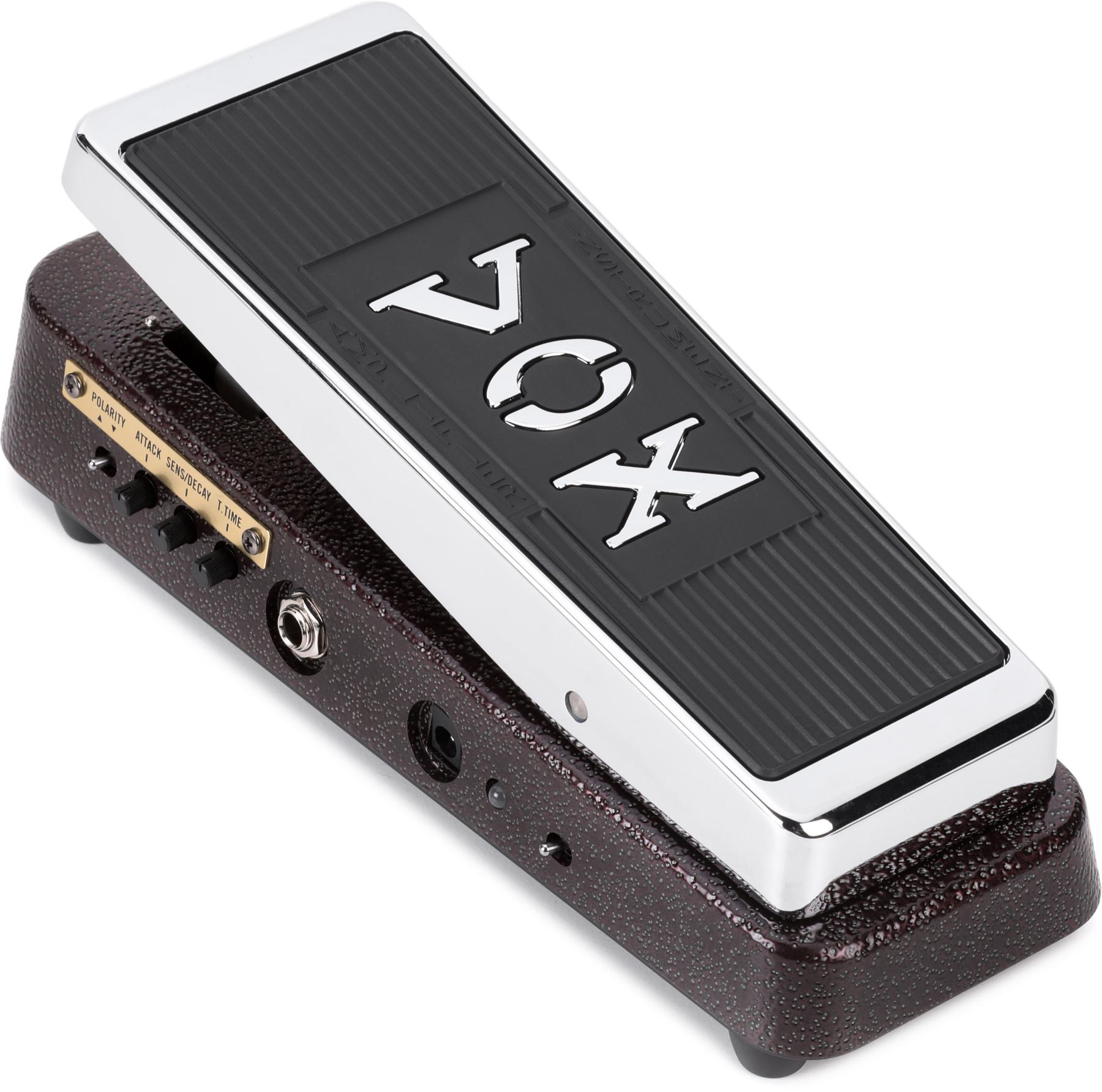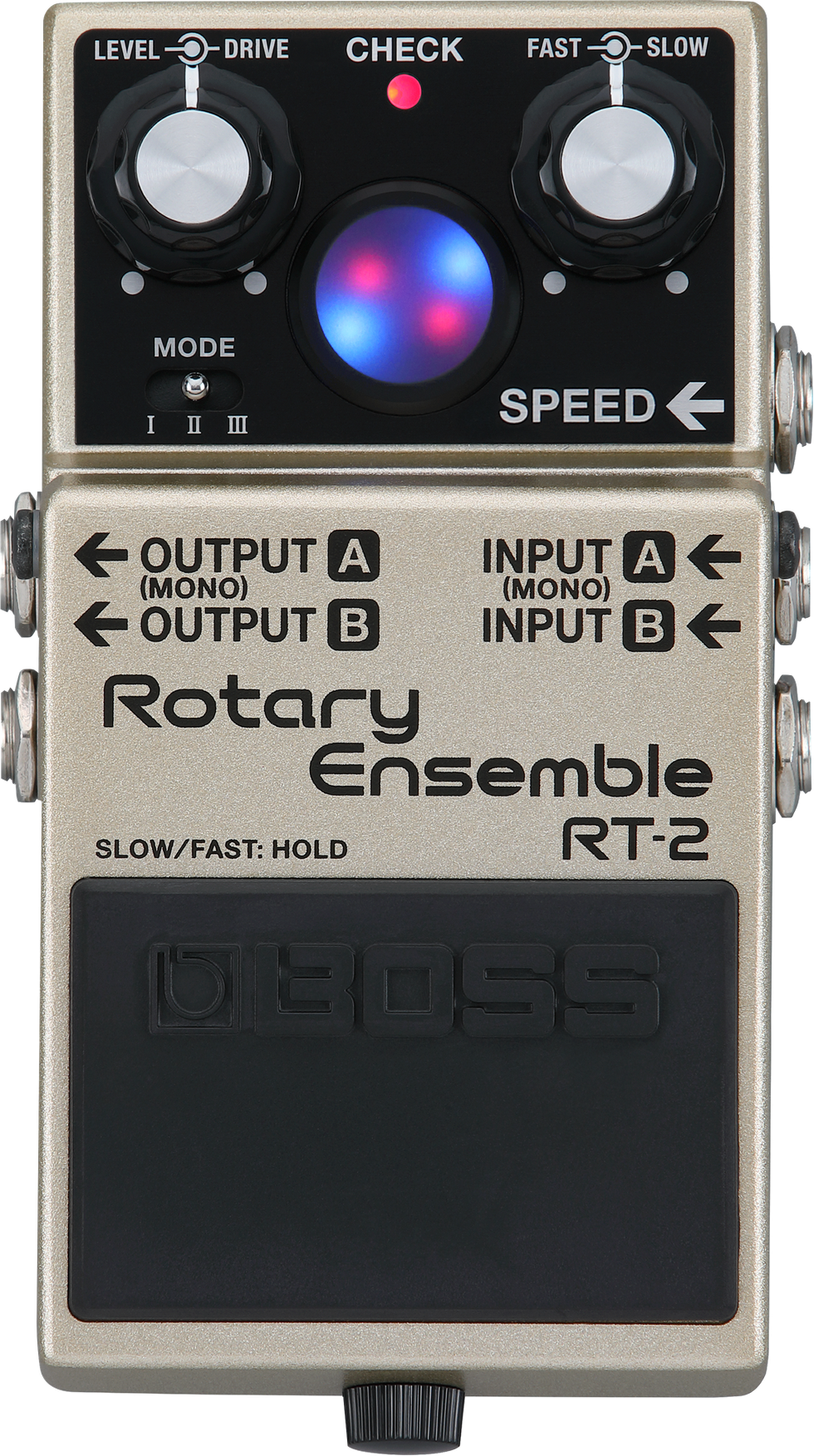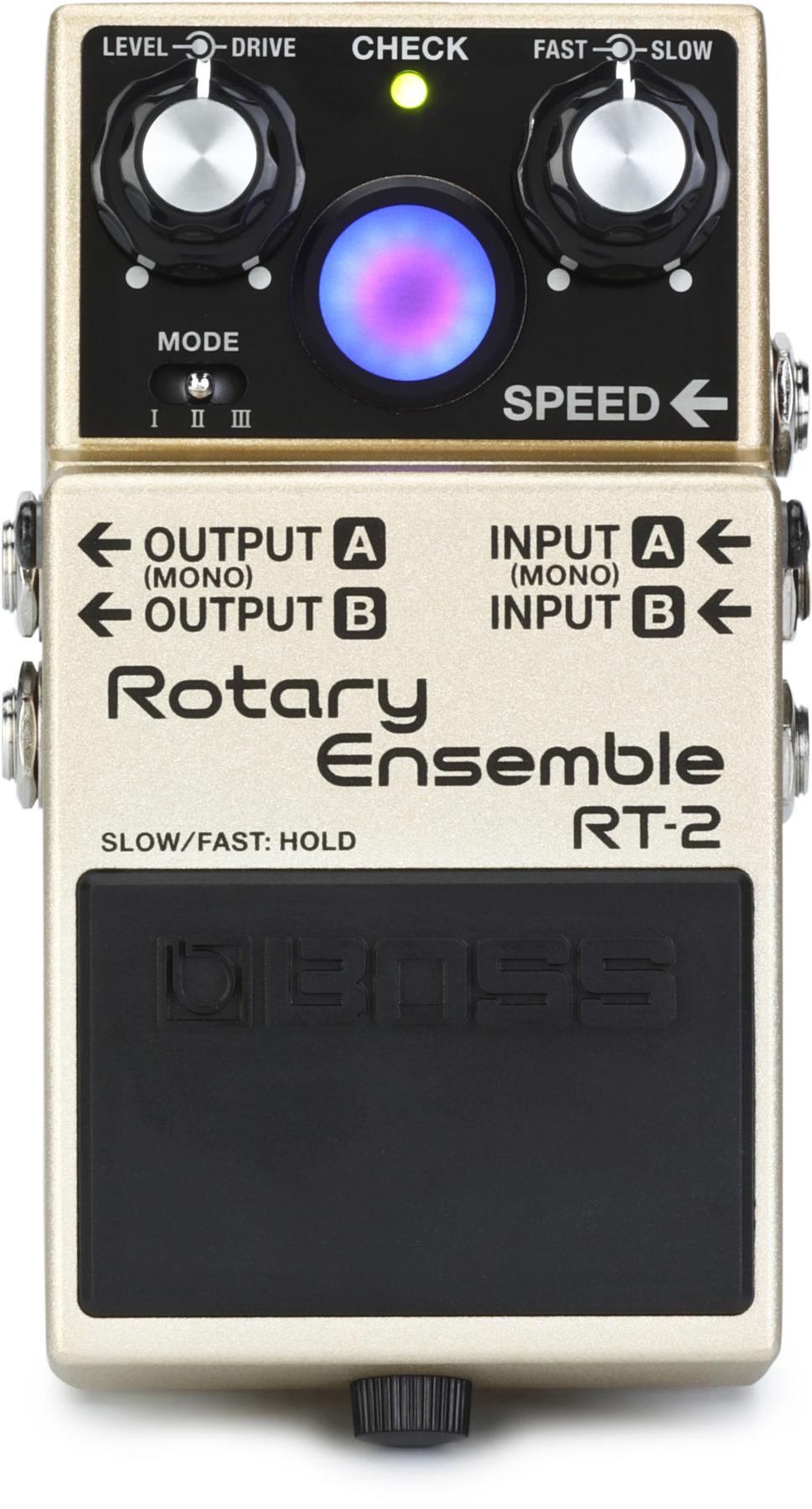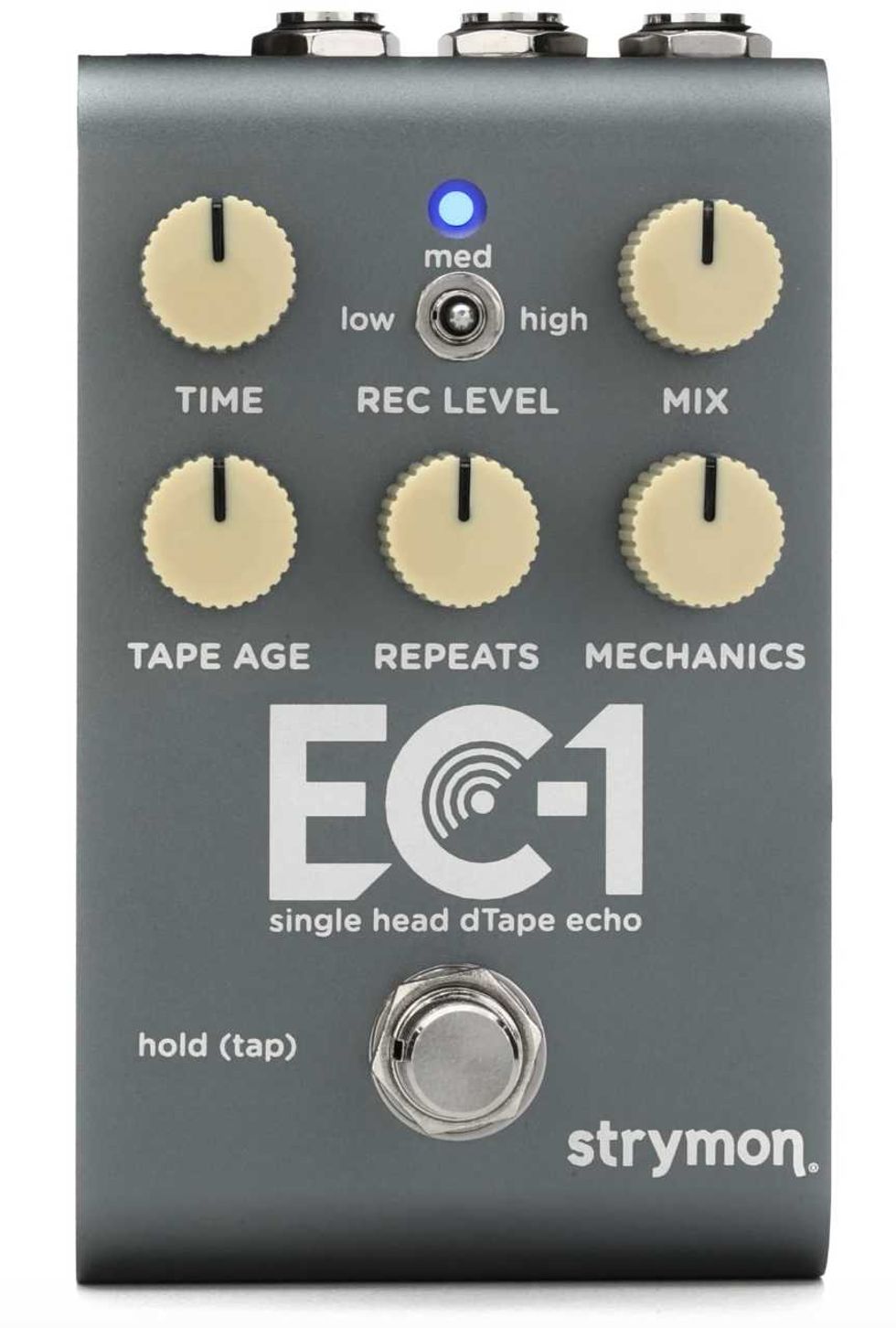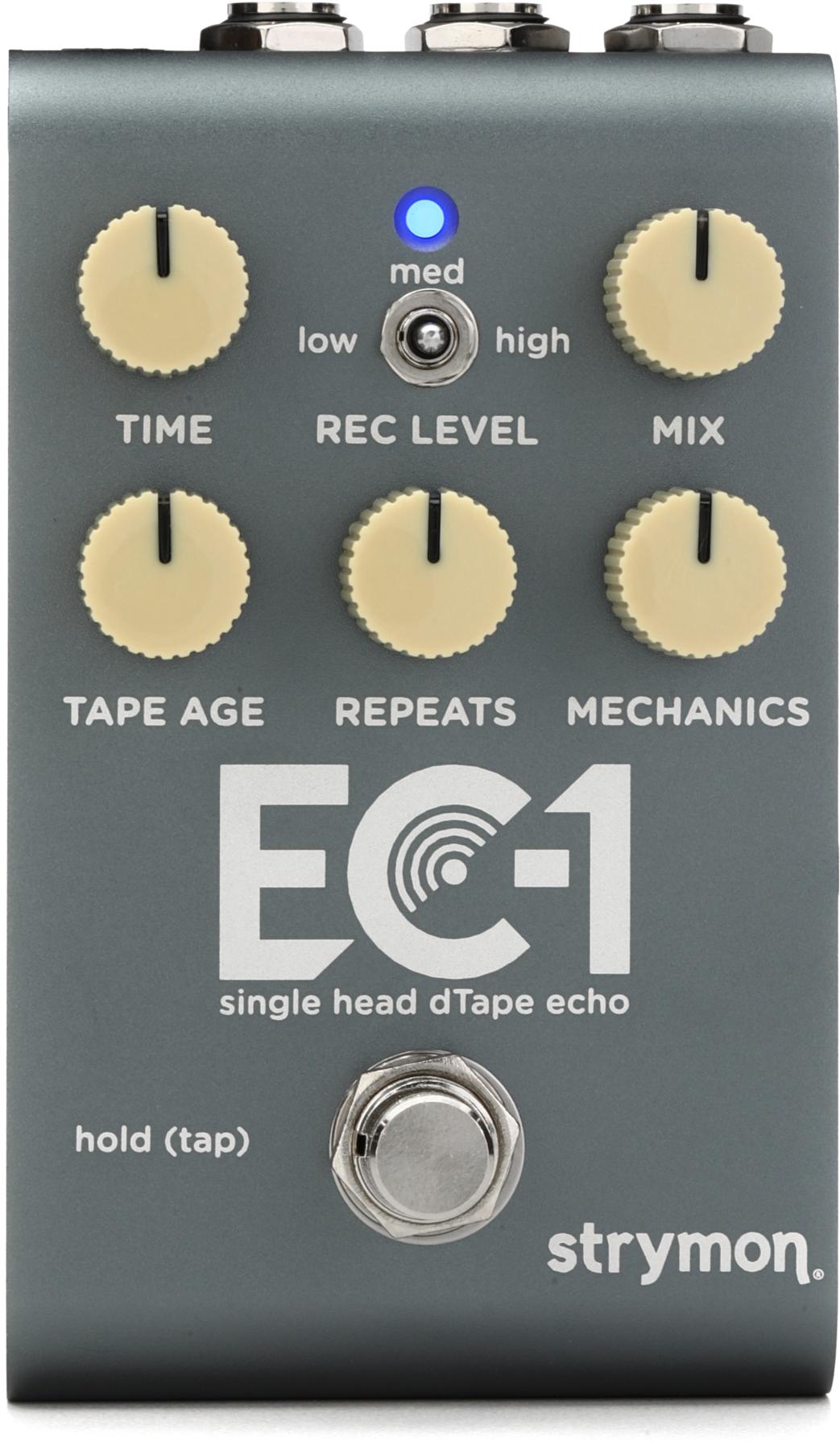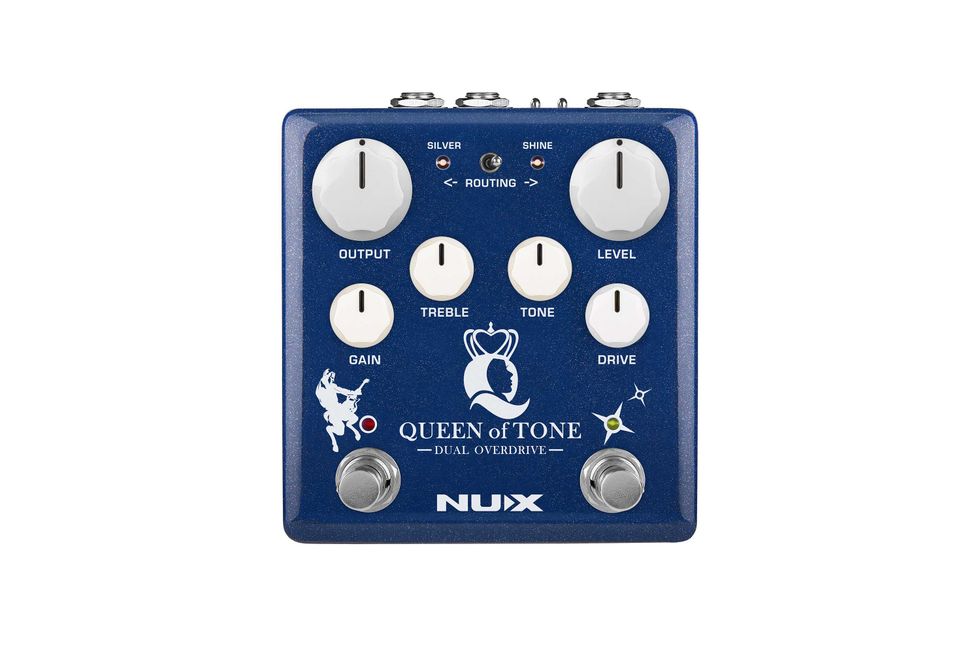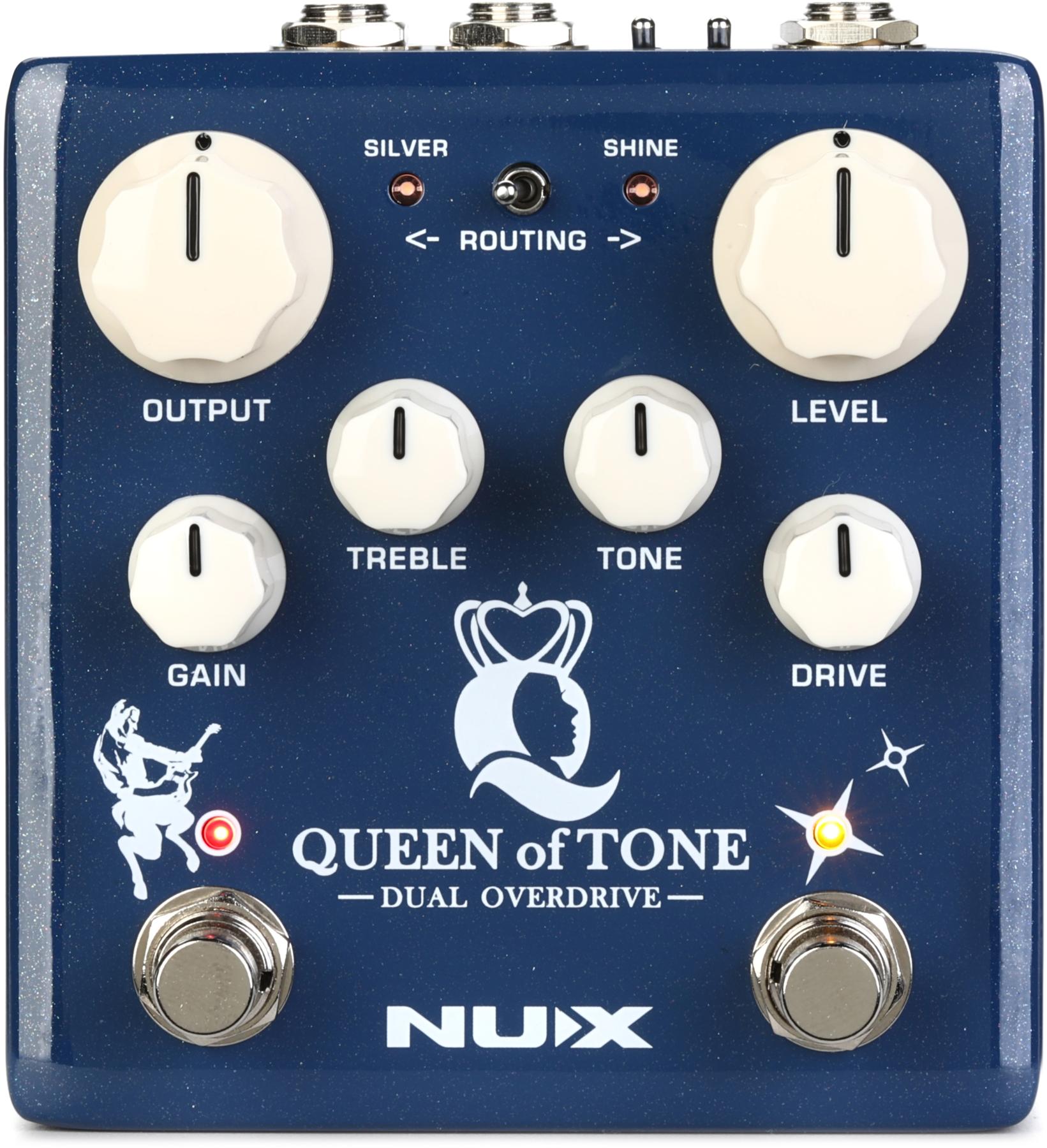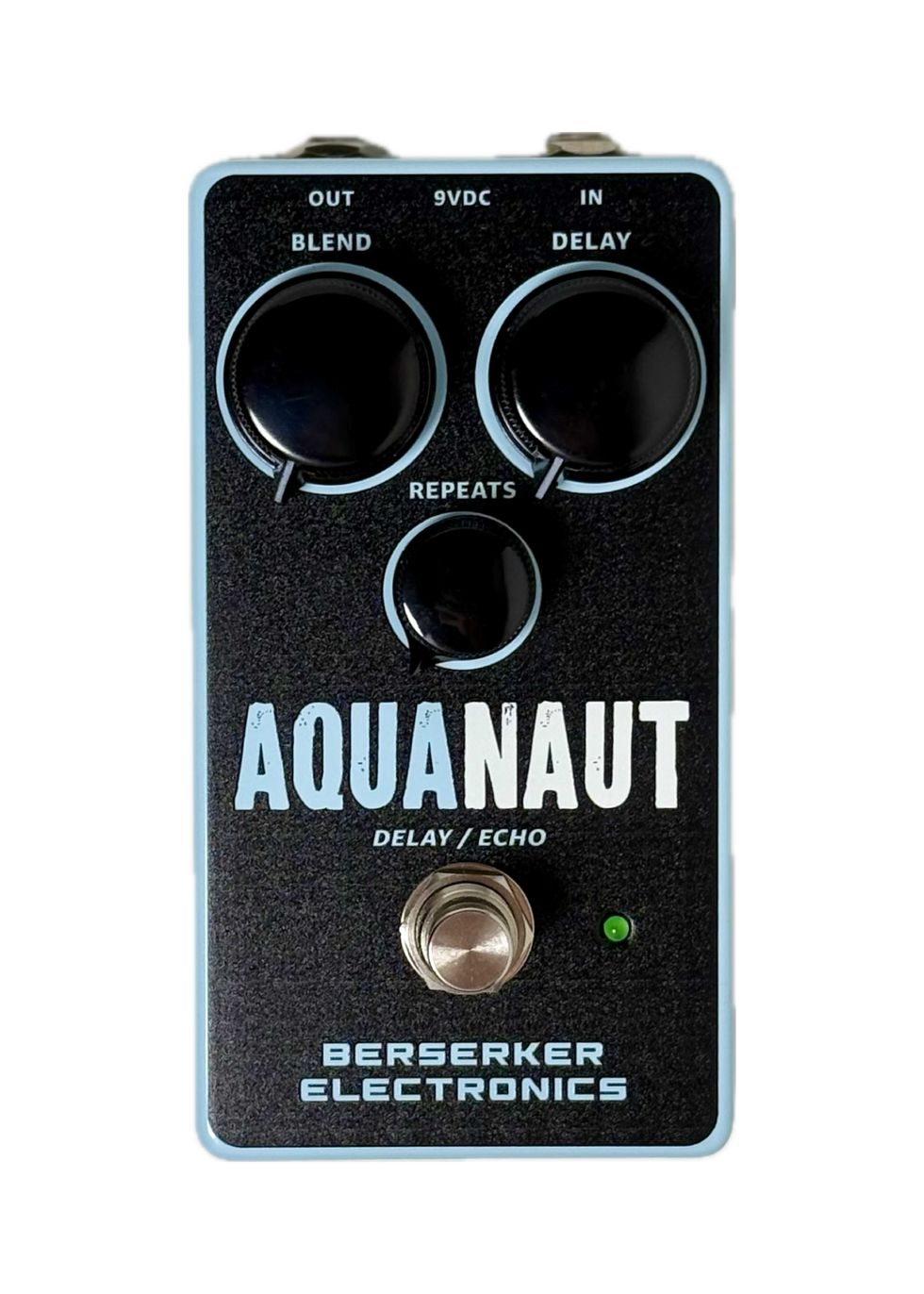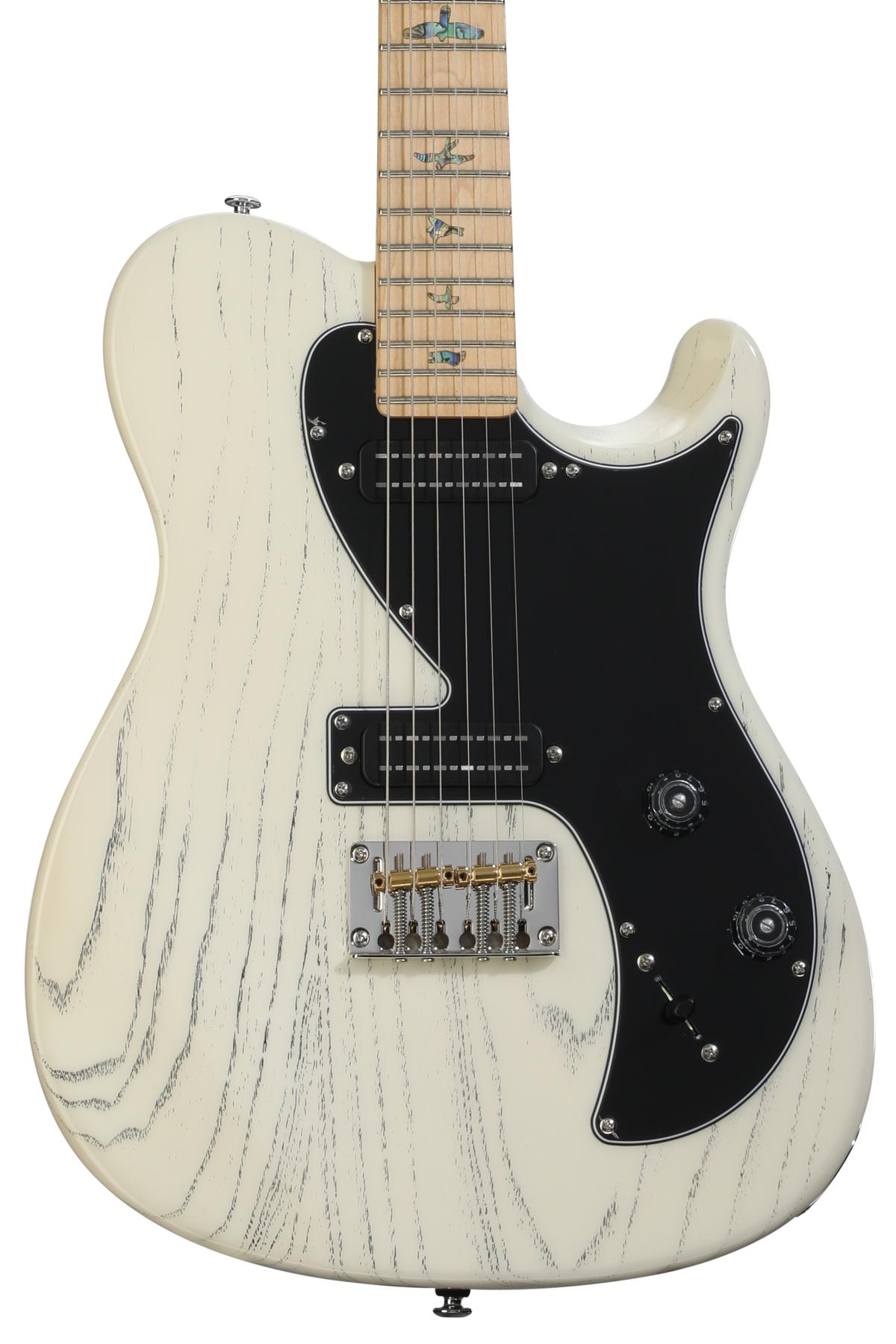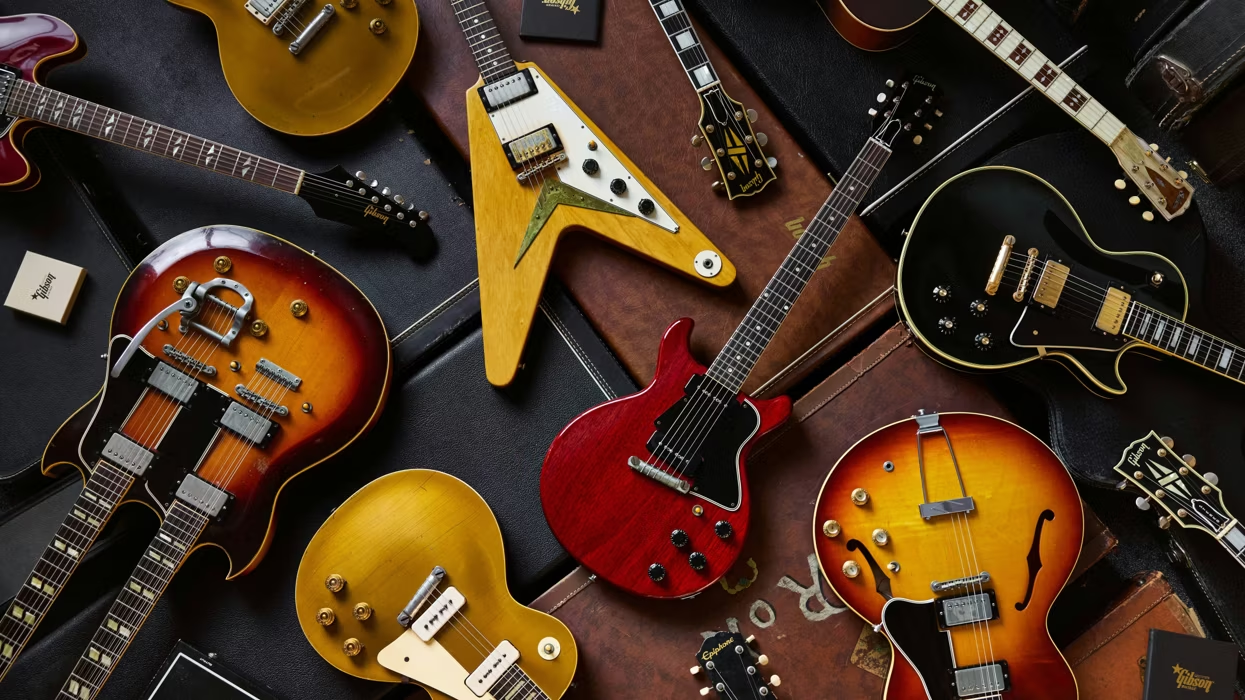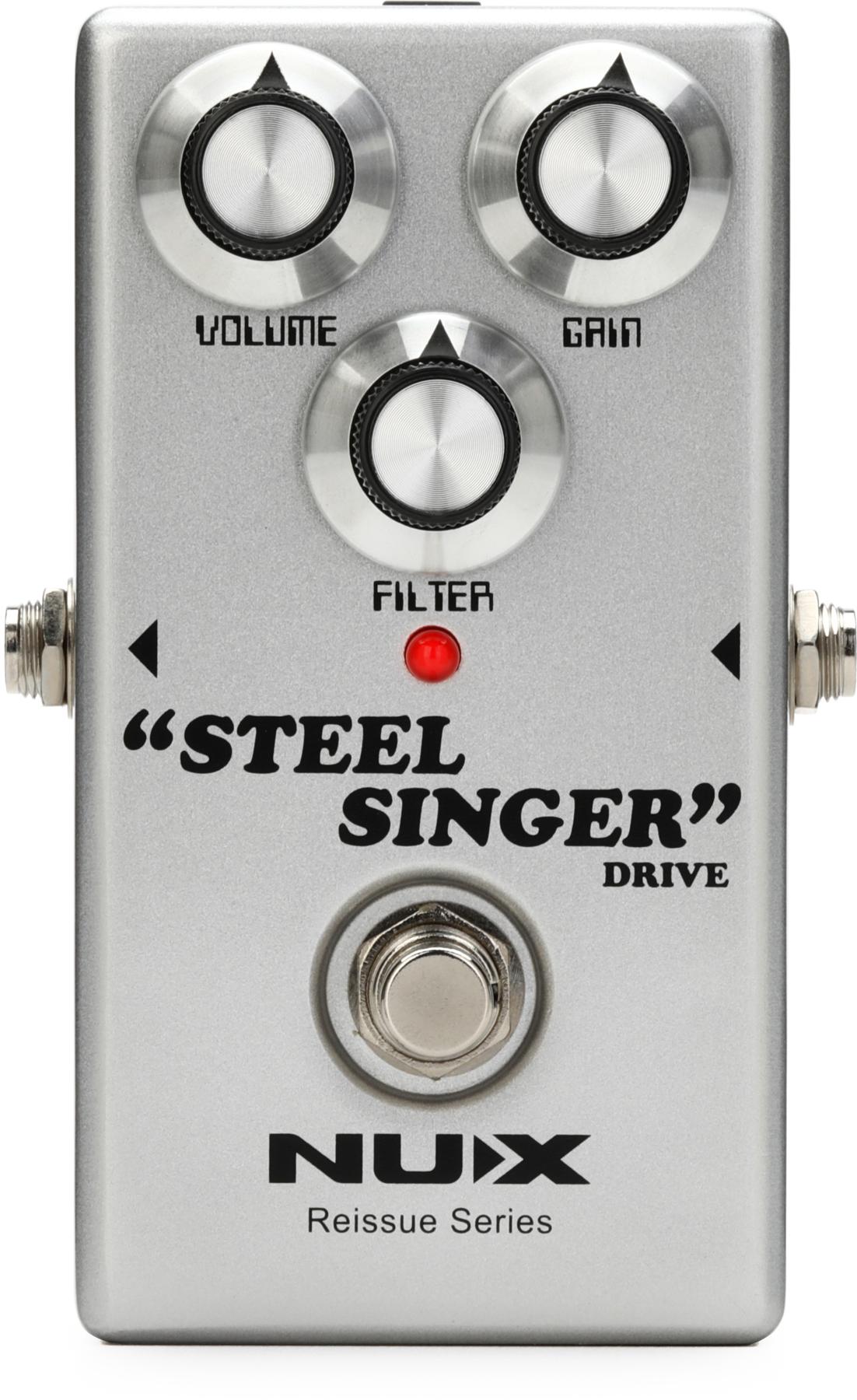Most of the pedals I play that are built by Skreddy’s Marc Ahlfs feel like the product of a lot of deep listening and diligent research. They always seem to go a layer deeper—more detail, more authentic, and just more moving when you plug in and play loud. That certainly goes for the new Skunk Drive Model 1606, a simple, straight-ahead stomp designed to add vintage small-Supro sounds and dynamics to a player’s crayon box. Skunk nails a sort of sound, feel, and responsiveness that strongly evokes Supros and other low-wattage classics. And it can transform the sound of a high-headroom amp while retaining a very organic sense of touch.
Airship Inspirations
If you’re familiar with Skreddy’s work, you’ll know Marc Ahlfs has an affinity for old-school stomps and the players that made them famous. A few of his fuzzes are revered by the David Gilmour cult. His Little Miss Sunshine is as enveloping as any Phase 90-inspired pedal you’ll ever play. And his love of Pink Floyd and Led Zeppelin, among others, inspires fantastic Fuzz Face- and Tone Bender-style stomps that effectively enhance and expand upon the potential of those platforms. The Skunk is, at least in part, another product of Ahlfs’ affinity for Jimmy Page—specifically Pagey’s dalliance with a Supro, and, quite probably, a Solo Tone Bender, on Led Zeppelin I. To many Zep’ fans (this author included), those tones are at least tied for Pagey’s most-bitchin’-ever sounds. There are many such textures hiding in the Skunk. But Zep’ tones are not the whole ball of wax here.
As is typical for a Skreddy pedal, the Skunk, which is fitted into a pretty gold-finished 1590B enclosure, is a tidy piece of pedal manufacturing. The circuit is made up of a fairly modest number of components, but they are arranged on a through-hole board with plenty of space between them. Skreddy will repair any pedal that malfunctions due to defects for three years. The build quality I see here suggests that’s unlikely. But if it happens, servicing the pedal should be no sweat.
Rippin’ with Le Pew
For most of the time I spent with the Skunk, I had it hooked up to an old black-panel Fender Vibrolux Reverb. I mention this because my Vibrolux is an especially “surfy” specimen. It’s clean and sparkly, the reverb is deep and splashy, and the treble will rip your head off if you’re not careful. In many respects, it’s the antithesis of the kind of amp the Skunk is built to approximate. And what impresses in this configuration is the Skunk’s ability to transform the sound and feel of an amp like my Vibrolux without sounding or feeling like you splashed a cheap coat of paint over your direct tone. Most overdriven sounds have an organic, natural aggression. And though the pedal creates a vivid illusion of a small amp, which flips the character of your amp completely, in a dynamic sense it feels seamlessly integrated with the amplifier on the receiving end. The Skunk doesn’t seem to rob the amp of its intrinsic energy, like some overdrives will—even though it adds a pretty squishy, almost tweed-like helping of compression to the base tone. It retains responsiveness to guitar volume attenuation and can essentially approximate the clean bypassed sound of the amp (save for loss of a little top-end zing) with a just-right reduction in instrument volume. The Skunk excels at clean-boost tasks, too, with the gain low and the output volume up high, adding a little midrange focus, but never clouding over an amp’s essence. At the other end of the gain range, the Skunk flirts with near-fuzz sounds that brim with delectable raunch.
”Though the pedal creates a vivid illusion of a small amp, which flips the character of your amp completely, in a dynamic sense it feels seamlessly integrated with the amplifier on the receiving end.“
The pedal’s midrange emphasis won’t float everyone’s boat. Depending on the Skunk’s settings, and the pickups driving it, it can sound a bit honky and filtered, not unlike a cocked wah at some settings. (Check out “Communication Breakdown” for reference to hear what I’m talking about.) Depending on your affinity for these types of colors, the tone profile could sound narrow at first. But the midrange emphasis does not obscure clarity. The first and second strings snap and pop with authority and definition that adds heat to leads, and you hear very nice balance between strings in chording situations. Incidentally, situating a Tone Bender fuzz before the Skunk, in true Led Zeppelin I style, generates amazing nastiness. Again, the midrange focus in these sounds won’t be everyone’s idea of fuzz perfection, but they will stand out in a mix like Wilt Chamberlain in a third-grade-class picture. Personally, they left me giddy.
The Verdict
Even though it delivers the surprise of awesome clean-boost tones. It’s not transparent, and it will shift the voice of a louder amp noticeably and profoundly. But in the process, it really does create the picture of a little amp writ large. How this sound aligns with your tone ideals will be very personal, and you should consider my tone score here as very subjective. If you dig Jimmy Page, Mick Ronson, and other sprouts from the glam, punk, and raw, electric Mississippi blues vines, you’ll find a lot to love here. But any guitarist keen to carve out a distinct, visceral place in an ensemble or mix could well find the Skreddy Skunk invaluable.




